Tests for viral meningitis. Meningitis Diagnosis and Treatment: Comprehensive Guide to Tests, Symptoms, and Care
How is meningitis diagnosed. What tests are used to identify meningitis. What are the treatment options for different types of meningitis. How to prepare for a doctor’s appointment if meningitis is suspected.
Diagnosing Meningitis: Key Tests and Procedures
Meningitis diagnosis involves a combination of medical history review, physical examination, and specific diagnostic tests. Physicians typically look for signs of infection around the head, ears, throat, and spine during the initial exam. The following tests are commonly used to confirm a meningitis diagnosis:
- Blood cultures
- Imaging studies (CT, MRI, X-rays)
- Spinal tap (lumbar puncture)
Blood Cultures: Detecting Bacterial Presence
Blood cultures play a crucial role in identifying the presence of bacteria in the bloodstream. How are blood cultures performed? A blood sample is placed in a special culture medium to encourage microorganism growth. Additionally, a portion of the sample may be stained (Gram’s stain) and examined under a microscope to directly visualize any bacteria present.

Imaging Studies: Visualizing Inflammation and Infection
Imaging techniques provide valuable insights into the condition of the brain and surrounding structures. Which imaging methods are most commonly used for meningitis diagnosis?
- Computerized tomography (CT) scans of the head
- Magnetic resonance imaging (MRI) of the brain
- X-rays or CT scans of the chest and sinuses
These imaging studies can reveal swelling, inflammation, or associated infections that may be linked to meningitis.
Spinal Tap: The Definitive Diagnostic Tool
A spinal tap, also known as a lumbar puncture, is considered the gold standard for diagnosing meningitis. During this procedure, cerebrospinal fluid (CSF) is collected and analyzed. What does the CSF analysis reveal in cases of meningitis?
- Low glucose levels
- Increased white blood cell count
- Elevated protein levels
In addition to these general indicators, CSF analysis can help identify the specific bacterium causing bacterial meningitis. For suspected viral meningitis, doctors may order specialized tests such as polymerase chain reaction (PCR) amplification or antibody tests to determine the exact viral cause and guide appropriate treatment.

Treatment Approaches for Different Types of Meningitis
The treatment of meningitis varies depending on its underlying cause. Let’s explore the different approaches for bacterial, viral, and other forms of meningitis.
Bacterial Meningitis: Rapid and Aggressive Treatment
Acute bacterial meningitis requires immediate intervention to prevent serious complications. What does the treatment protocol for bacterial meningitis typically include?
- Intravenous antibiotics
- Corticosteroids (in some cases)
- Drainage of infected sinuses or mastoids (if necessary)
The choice of antibiotics depends on the specific bacteria causing the infection. Initially, broad-spectrum antibiotics may be administered until the exact cause is determined. Prompt treatment is crucial to ensure recovery and reduce the risk of complications such as brain swelling and seizures.
Viral Meningitis: Supportive Care and Symptom Management
Unlike bacterial meningitis, viral meningitis cannot be treated with antibiotics. Most cases improve on their own within several weeks. How is mild viral meningitis typically managed?
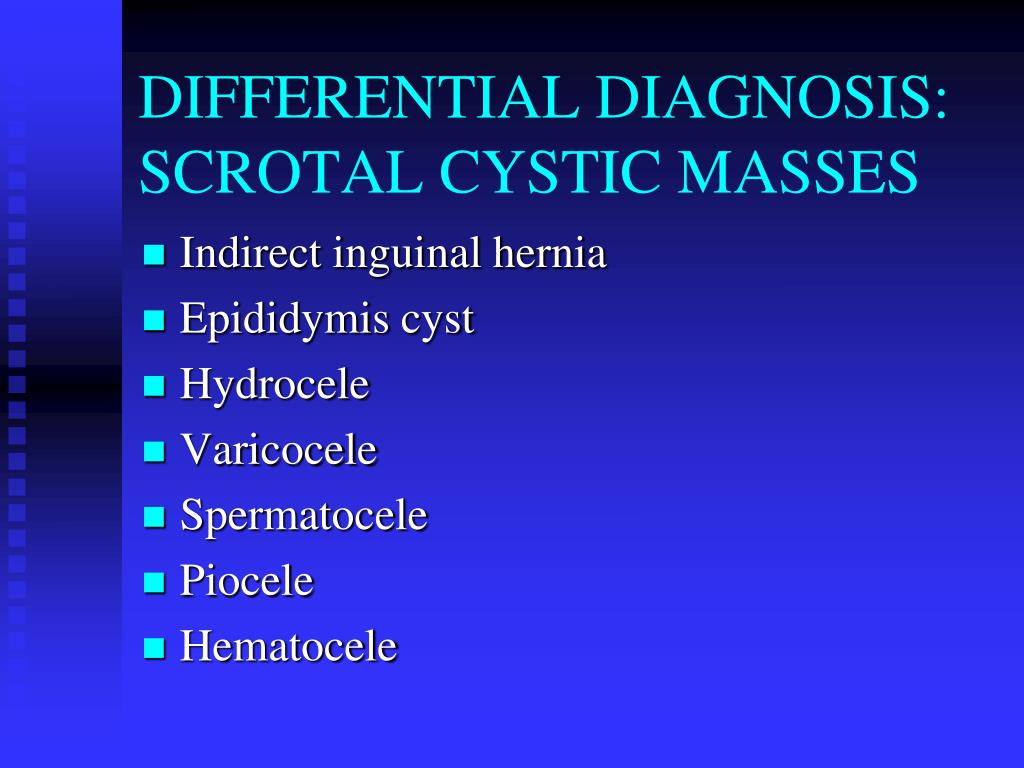
- Bed rest
- Increased fluid intake
- Over-the-counter pain medications for fever and body aches
In some instances, doctors may prescribe corticosteroids to reduce brain swelling or anticonvulsant medications to control seizures. If herpes virus is the cause, antiviral medications can be administered.
Other Types of Meningitis: Tailored Treatment Approaches
Treatment for other forms of meningitis is based on their specific causes:
- Fungal meningitis: Antifungal medications
- Tuberculous meningitis: Combination of specific antibiotics
- Noninfectious meningitis (due to allergic reactions or autoimmune diseases): Corticosteroids
- Cancer-related meningitis: Therapy targeting the specific cancer
In cases where the cause is initially unknown, doctors may start both antiviral and antibiotic treatments while awaiting definitive diagnosis.
Preparing for a Medical Appointment: Essential Steps
If you suspect meningitis, it’s crucial to seek immediate medical attention, especially if you’ve been exposed to bacterial meningitis. When preparing for a medical appointment, consider the following steps:
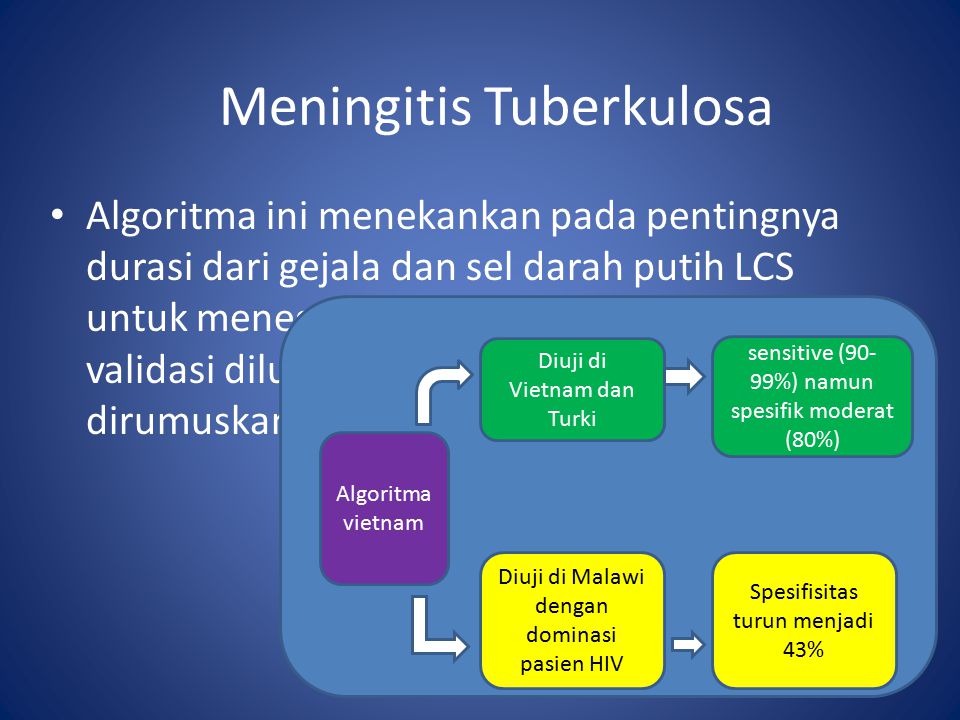
- Be aware of any pre- or post-appointment restrictions
- Document your symptoms, including changes in mood, thinking, or behavior
- Note the timeline of symptom development
- Record any recent travel, moves, or animal interactions
- Prepare information about your living situation (e.g., college dormitory)
By providing this information, you can help your healthcare provider make a more accurate diagnosis and determine the appropriate course of treatment.
Understanding the Risks and Complications of Meningitis
Meningitis can be a life-threatening condition, with its severity largely dependent on the underlying cause. What are the potential complications associated with meningitis?
- Brain damage
- Hearing loss
- Seizures
- Memory problems
- Learning disabilities
- Hydrocephalus (buildup of fluid in the brain)
The risk of complications is generally higher in bacterial meningitis compared to viral meningitis. Prompt diagnosis and treatment are critical in minimizing these risks and improving overall outcomes.

Prevention Strategies: Reducing the Risk of Meningitis
While not all forms of meningitis are preventable, there are several strategies that can help reduce the risk of infection. What are some effective prevention methods?
- Vaccination against common bacterial causes (e.g., meningococcal, pneumococcal, and Haemophilus influenzae type b vaccines)
- Practicing good hygiene, including regular handwashing
- Avoiding close contact with individuals who have meningitis
- Strengthening the immune system through healthy lifestyle choices
- Taking precautions during travel to high-risk areas
For individuals at higher risk, such as those with compromised immune systems or those living in close quarters (e.g., college dormitories), additional preventive measures may be recommended by healthcare providers.
Meningitis in Special Populations: Considerations for Different Age Groups
The presentation, diagnosis, and management of meningitis can vary depending on the age of the affected individual. How does meningitis differ across different age groups?

Neonatal Meningitis
Newborns are particularly vulnerable to meningitis, and the condition can be challenging to diagnose due to nonspecific symptoms. What are some key considerations for neonatal meningitis?
- Higher risk of long-term complications
- Need for specialized antimicrobial regimens
- Importance of early recognition and treatment
Meningitis in Children
Children may present with different symptoms compared to adults. What should parents and healthcare providers be aware of regarding meningitis in children?
- Potential for rapid progression of symptoms
- Importance of age-appropriate vaccination
- Need for careful monitoring during treatment
Meningitis in Older Adults
Older adults may have atypical presentations of meningitis, making diagnosis more challenging. What factors should be considered when addressing meningitis in the elderly population?
- Increased risk due to age-related immune system changes
- Potential for comorbidities to complicate diagnosis and treatment
- Need for tailored treatment approaches considering overall health status
Emerging Research and Future Directions in Meningitis Management
The field of meningitis research is continuously evolving, with new diagnostic tools, treatment options, and preventive strategies being developed. What are some promising areas of research in meningitis management?
-Step-1-Version-3.jpg/aid525259-v4-728px-Treat-Meningitis-(Spinal-Meningitis)-Step-1-Version-3.jpg)
- Development of rapid diagnostic tests for faster identification of causative agents
- Exploration of novel antimicrobial agents to combat drug-resistant strains
- Investigation of immunomodulatory therapies to reduce inflammation and improve outcomes
- Advancements in vaccine technology to provide broader protection against meningitis-causing pathogens
- Research into the long-term effects of meningitis and potential interventions to mitigate these impacts
As research progresses, it is likely that our understanding of meningitis and our ability to diagnose, treat, and prevent the condition will continue to improve, leading to better outcomes for affected individuals.
Living with the Aftermath: Long-term Care and Support for Meningitis Survivors
For many individuals who survive meningitis, the journey doesn’t end with the acute phase of the illness. Long-term care and support are often necessary to address ongoing challenges and promote optimal quality of life. What aspects of care are important for meningitis survivors?

Rehabilitation Services
Depending on the severity and complications of the meningitis infection, various rehabilitation services may be beneficial:
- Physical therapy to address mobility issues
- Occupational therapy to improve daily living skills
- Speech and language therapy for communication difficulties
- Cognitive rehabilitation for memory and learning challenges
Psychological Support
The emotional impact of meningitis can be significant. What types of psychological support may be helpful for survivors?
- Counseling or psychotherapy to address anxiety, depression, or post-traumatic stress
- Support groups to connect with others who have had similar experiences
- Family therapy to help loved ones understand and cope with changes
Educational Accommodations
For children and young adults who have experienced meningitis, educational support may be necessary. What accommodations might be helpful in the academic setting?
- Individualized education plans (IEPs)
- Extra time for assignments and exams
- Assistive technologies to support learning
- Specialized tutoring or educational support services
Regular Medical Follow-up
Ongoing medical care is crucial for monitoring potential long-term effects and addressing any emerging issues. What should be included in long-term follow-up care?

- Regular hearing and vision assessments
- Neurological evaluations to monitor cognitive function
- Monitoring for potential endocrine disorders
- Assessment of vaccination status and need for boosters
By addressing these various aspects of long-term care, meningitis survivors can be better supported in their recovery and ongoing health management.
Meningitis – Diagnosis and treatment
Diagnosis
Your family doctor or pediatrician can diagnose meningitis based on a medical history, a physical exam and certain diagnostic tests. During the exam, your doctor may check for signs of infection around the head, ears, throat and skin along the spine.
You or your child may undergo the following diagnostic tests:
- Blood cultures. A blood sample is placed in a special dish to see if it grows microorganisms, particularly bacteria. A sample may also be placed on a slide and stained (Gram’s stain), then studied under a microscope to see whether bacteria are present.
- Imaging. Computerized tomography (CT) or magnetic resonance imaging (MRI) scans of the head may show swelling or inflammation. X-rays or CT scans of the chest or sinuses also may show infection that may be associated with meningitis.

Spinal tap (lumbar puncture). For a definitive diagnosis of meningitis, you’ll need a spinal tap to collect cerebrospinal fluid (CSF). In people with meningitis, the CSF often shows a low sugar (glucose) level along with an increased white blood cell count and increased protein.
CSF analysis may also help your doctor identify which bacterium caused the meningitis. If your doctor suspects viral meningitis, he or she may order a DNA-based test known as a polymerase chain reaction (PCR) amplification or a test to check for antibodies against certain viruses to determine the specific cause and proper treatment.
Treatment
The treatment depends on the type of meningitis you or your child has.
Bacterial meningitis
Acute bacterial meningitis must be treated immediately with intravenous antibiotics and sometimes corticosteroids.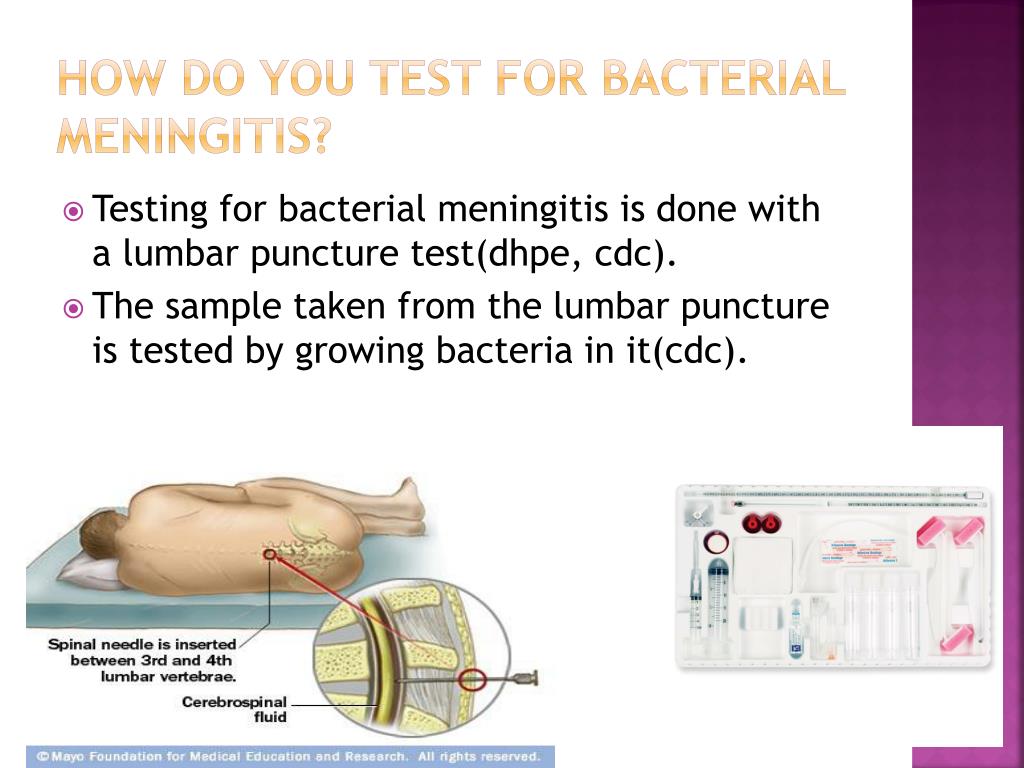 This helps to ensure recovery and reduce the risk of complications, such as brain swelling and seizures.
This helps to ensure recovery and reduce the risk of complications, such as brain swelling and seizures.
The antibiotic or combination of antibiotics depends on the type of bacteria causing the infection. Your doctor may recommend a broad-spectrum antibiotic until he or she can determine the exact cause of the meningitis.
Your doctor may drain any infected sinuses or mastoids — the bones behind the outer ear that connect to the middle ear.
Viral meningitis
Antibiotics can’t cure viral meningitis, and most cases improve on their own in several weeks. Treatment of mild cases of viral meningitis usually includes:
- Bed rest
- Plenty of fluids
- Over-the-counter pain medications to help reduce fever and relieve body aches
Your doctor may prescribe corticosteroids to reduce swelling in the brain, and an anticonvulsant medication to control seizures. If a herpes virus caused your meningitis, an antiviral medication is available.
Other types of meningitis
If the cause of your meningitis is unknown, your doctor may start antiviral and antibiotic treatment while the cause is determined.
Treatment for chronic meningitis is based on the underlying cause. Antifungal medications treat fungal meningitis, and a combination of specific antibiotics can treat tuberculous meningitis. However, these medications can have serious side effects, so treatment may be deferred until a laboratory can confirm that the cause is fungal.
Noninfectious meningitis due to allergic reaction or autoimmune disease may be treated with corticosteroids. In some cases, no treatment may be required because the condition can resolve on its own. Cancer-related meningitis requires therapy for the specific cancer.
Clinical trials
Explore Mayo Clinic studies testing new treatments, interventions and tests as a means to prevent, detect, treat or manage this condition.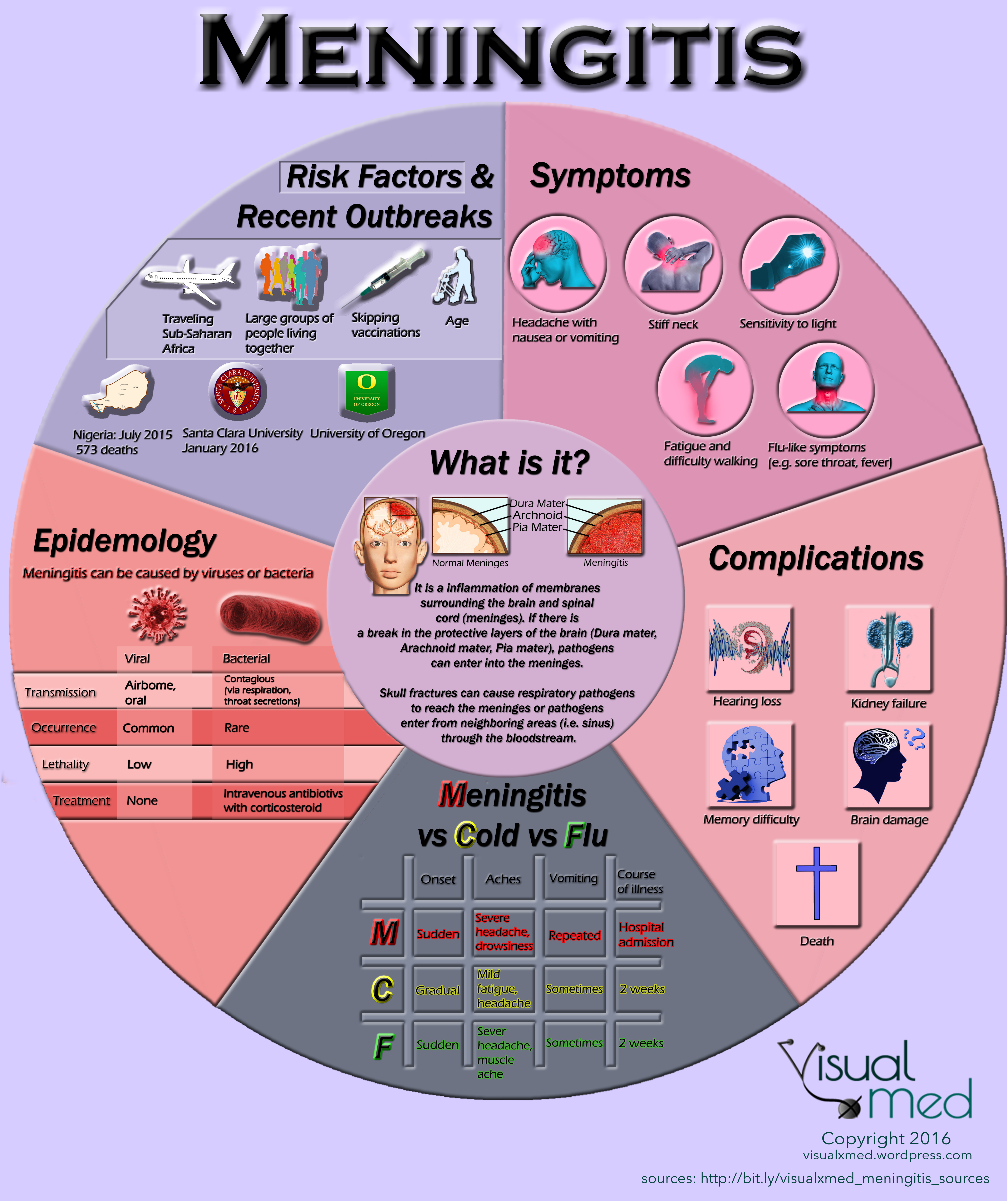
Preparing for your appointment
Meningitis can be life-threatening, depending on the cause. If you’ve been exposed to bacterial meningitis and you develop symptoms, go to an emergency room and let medical staff know you may have meningitis.
If you’re not sure what you have and you call your doctor for an appointment, here’s how to prepare for your visit.
What you can do
- Be aware of any pre- or post-appointment restrictions. Ask if there’s anything you need to do in advance, such as restrict your diet. Also ask if you may need to stay at your doctor’s office for observation following your tests.
- Write down symptoms you’re having, including changes in your mood, thinking or behavior. Note when you developed each symptom and whether you had cold- or flu-like symptoms.
- Write down key personal information, including any recent moves, vacations or interactions with animals.
 If you’re a college student, your doctor likely will ask questions about any similar signs or symptoms in your roommates and dorm mates. Your doctor will also want to know your vaccination history.
If you’re a college student, your doctor likely will ask questions about any similar signs or symptoms in your roommates and dorm mates. Your doctor will also want to know your vaccination history. - Make a list of all medications, vitamins or supplements you’re taking.
- Take a family member or friend along. Meningitis can be a medical emergency. Take someone who can help remember all the information your doctor provides and who can stay with you if needed.
- Write down questions to ask your doctor.
For meningitis, some basic questions to ask your doctor include:
- What kinds of tests do I need?
- What treatment do you recommend?
- Am I at risk of long-term complications?
- If my condition is not treatable with antibiotics, what can I do to help my body recover?
- Am I contagious? Do I need to be isolated?
- What is the risk to my family? Should they take preventive medication?
- Is there a generic alternative to the prescription medicine you’re recommending?
- Do you have any printed information I can have? What websites do you recommend?
What to expect from your doctor
Your doctor is likely to ask you a number of questions, such as:
- When did you begin experiencing symptoms?
- How severe are your symptoms? Do they seem to be getting worse?
- Does anything seem to improve your symptoms?
- Have you been exposed to anyone with meningitis?
- Does anyone in your household have similar symptoms?
- What is your vaccination history?
- Do you take any immunosuppressant medications?
- Do you have other health problems, including allergies to any medications?
What you can do in the meantime
When you call your doctor’s office for an appointment, describe the type and severity of your symptoms. If your doctor says you don’t need to come in immediately, rest as much as possible while you’re waiting for your appointment.
If your doctor says you don’t need to come in immediately, rest as much as possible while you’re waiting for your appointment.
Drink plenty of fluids and take acetaminophen (Tylenol, others) to reduce your fever and body aches. Also avoid any medications that may make you less alert. Don’t go to work or school.
Oct. 01, 2020
Viral meningitis
Your child was recently diagnosed with viral meningitis. This infection causes swelling of the lining of the brain. Your child may have symptoms such as fever, headache, neck pain or stiffness, pain when looking at bright lights, nausea, vomiting, poor appetite, tiredness and sleepiness. The virus may also infect other parts of the body and cause symptoms such as skin rash, runny nose, sore throat, ear ache, cough, difficulty breathing and diarrhea. Let your doctor know if your child has any of these symptoms.
To diagnose viral meningitis, the doctor performs a lumbar puncture or ‘spinal tap’ to obtain some of the fluid that normally surrounds the brain and spinal cord. Laboratory tests on this fluid help the doctor decide whether the infection is caused by a virus or other germ such as bacteria. Most cases of viral meningitis are not very serious. Children recover in about one or two weeks. However, it is very important to recognize meningitis caused by bacteria because it is more serious but can be treated with antibiotics. Antibiotic treatment is not effective against viral meningitis.
Laboratory tests on this fluid help the doctor decide whether the infection is caused by a virus or other germ such as bacteria. Most cases of viral meningitis are not very serious. Children recover in about one or two weeks. However, it is very important to recognize meningitis caused by bacteria because it is more serious but can be treated with antibiotics. Antibiotic treatment is not effective against viral meningitis.
If your child has mild symptoms from viral meningitis, and is doing well at home, the doctor will not admit him or her to hospital. However, if your child is quite sick from the viral infection (especially young infants), the doctor may hospitalize your child temporarily for further care until he or she is better.
Occasionally, a doctor is unable to distinguish viral and bacterial meningitis on the basis of the test results. This may be because your child was taking an oral antibiotic before the spinal tap was completed. An antibiotic does not prevent the meningitis from happening but can make the spinal fluid results confusing. Some viral infections can also give spinal fluid results that falsely resemble bacterial meningitis. In that case, your doctor may decide to hospitalize your child and start intravenous antibiotic(s) while waiting for other test results. If the diagnosis of viral meningitis becomes apparent in the next several days, the antibiotic(s) will be stopped. Sometimes this involves repeating the spinal tap in one or two days.
Some viral infections can also give spinal fluid results that falsely resemble bacterial meningitis. In that case, your doctor may decide to hospitalize your child and start intravenous antibiotic(s) while waiting for other test results. If the diagnosis of viral meningitis becomes apparent in the next several days, the antibiotic(s) will be stopped. Sometimes this involves repeating the spinal tap in one or two days.
In Canada viral meningitis occurs most commonly during the summer when the two most common viruses that cause meningitis, coxsackievirus and echovirus, are in the community. These viruses frequently infect many children and adults at the same time, but few will actually develop viral meningitis. The meningitis resolved its own, usually without any complications. The viruses spread easily from one person to another. The viruses are carried in the stool or feces, making it very important for all family members to wash their hands with soap and water after using the washroom (or changing dirty diapers), and before food preparation and eating to prevent spread of the virus.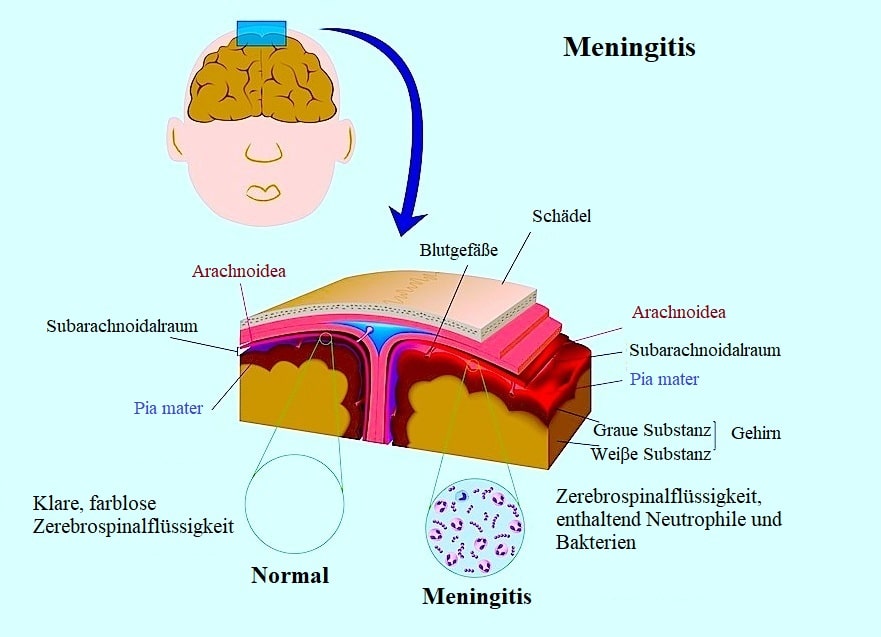 Viral meningitis may also occur at other seasons during the year but may be caused by other types of viruses. Your doctor can explain more about the type of viral infection that your child has.
Viral meningitis may also occur at other seasons during the year but may be caused by other types of viruses. Your doctor can explain more about the type of viral infection that your child has.
Footnotes
This information should not be used as a substitute for the medical care and advice of your physician. There may be variations in treatment that your physician may recommend based on individual facts and circumstances.
This information may be reproduced without permission and shared with patients and their families. (Reviewed by the Canadian Paediatric Society Board of Directors)
Canadian Paediatric Society, 2204 Walkley Road, Suite 100, Ottawa, Ontario K1G 4G8 telephone 613-526-9397, fax 613-526-3332, http://www.cps.ca
Diagnosis and Treatment of Viral Meningitis | Journal of Ethics
Viral meningitis is inflammation of the leptomeniges due to a viral agent. It is the most common cause of meningitis, with an annual incidence of 10 to 11 people per 100,000. Viral meningitis occurs most commonly in those under the age of 30, with a predominance in neonates and children. The disease is usually self-limiting, rarely requires hospitalization, and symptoms typically resolve in 7-10 days. Enterovirus is the most common etiologic agent and is responsible for 85 percent of viral meningitis cases. The peak season for enterovirus is during the summer months when it is hypothesized that warm weather aids in its spread [1].
Viral meningitis occurs most commonly in those under the age of 30, with a predominance in neonates and children. The disease is usually self-limiting, rarely requires hospitalization, and symptoms typically resolve in 7-10 days. Enterovirus is the most common etiologic agent and is responsible for 85 percent of viral meningitis cases. The peak season for enterovirus is during the summer months when it is hypothesized that warm weather aids in its spread [1].
The symptoms of viral meningitis are indistinguishable from those of bacterial meningitis or aseptic causes of meningitis. Classic symptoms are fever, headache, and neck stiffness (nuchal rigidity). Young children or infants may simply present with fever and irritability. Other symptoms include photophobia, myalgias, nausea and vomiting, diarrhea, lethargy, and even upper respiratory symptoms (which may precede or occur concomitantly with the classic symptoms) [2].
Evaluating Meningitis
Physical exam maneuvers for nuchal rigidity include the Kernig and Brudzinski signs.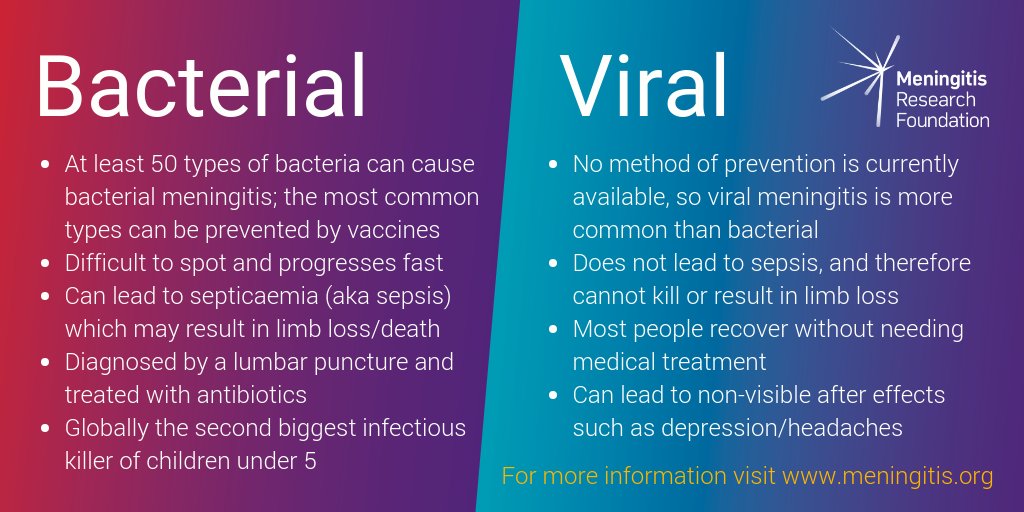 Kernig’s is performed by having the supine patient, with hips and knees flexed, extend the leg passively. The test is positive if the leg extension causes pain. The Brudzinski’s sign is positive when passive forward flexion of the neck causes the patient to involuntarily raise his knees or hips in flexion. Despite their historical significance, a positive result from either test has not been shown to be reliable indicators of meningitis.
Kernig’s is performed by having the supine patient, with hips and knees flexed, extend the leg passively. The test is positive if the leg extension causes pain. The Brudzinski’s sign is positive when passive forward flexion of the neck causes the patient to involuntarily raise his knees or hips in flexion. Despite their historical significance, a positive result from either test has not been shown to be reliable indicators of meningitis.
It is critical to distinguish between bacterial and viral etiologies because the course of bacterial meningitis is rapid and potentially deadly. History and physical exam alone are not sufficient to confirm the diagnosis, especially in young children or infants. Meningitis is definitively diagnosed with a lumbar puncture, which in viral meningitis typically reveals clear cerebral spinal fluid (CSF) with elevated white blood cell counts predominated by lymphocytes, in contrast to the PMNs (polymorphonuclear leukocytes) that typify bacterial etiologies. CSF glucose levels are characteristically normal; protein may be normal or slightly elevated.
CSF glucose levels are characteristically normal; protein may be normal or slightly elevated.
CSF analysis should include a gram stain, acid-fast stain, and culture to further aid in diagnosis. If available, polymerase chain reaction (PCR) for presence of genomic material from likely viral pathogens can quickly assist in determining whether a patient’s meningitis is bacterial or viral. PCR tests are currently available for enterovirus, cytomegalovirus, herpes simplex virus, and HIV pathogens. A positive PCR test for enterovirus in the emergency room can save a patient with mild symptoms from an unnecessary hospital admission, assuming proper support and provisions at home. Keep in mind that mild meningeal symptoms in the setting of prior antibiotic use may mask a fulminant cause. As with any potentially infectious picture, it is important to clarify immune status, inasmuch as mycobacterial and fungal causes are more likely in those with compromised immune systems.
Treating Viral Meningitis
Treatment for viral meningitis is primarily supportive, especially in the case of enterovirus.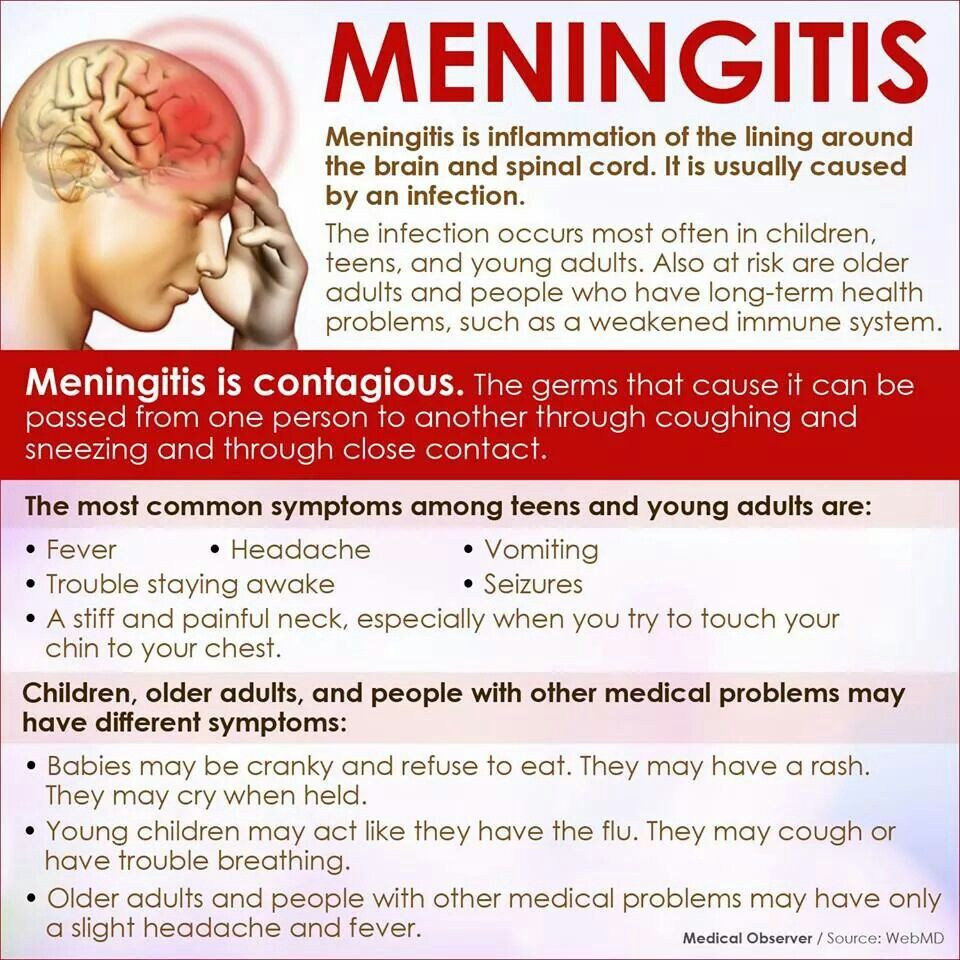 Some patients require hospitalization for fluid administration and pain relief, while others can be safely treated at home. Exceptions include varicella and herpes simplex virus meningitis, which, if severe, are treated with antiviral agents such as acyclovir.
Some patients require hospitalization for fluid administration and pain relief, while others can be safely treated at home. Exceptions include varicella and herpes simplex virus meningitis, which, if severe, are treated with antiviral agents such as acyclovir.
References
Centers for Disease Control. Non-polio enterovirus infections. Accessed June 11, 2007.
- Begh E, Nicolosi A, Kurland LT, Mulder DW, Hauser WA, Shuster L.
Encephalitis and aseptic meningitis, Olmsted County, Minnesota, 1950-1981: I. Epidemiology.Ann Neurol.
1984;16(3):283-294.
Citation
Virtual Mentor. 2007;9(7):497-498.
DOI
10.1001/virtualmentor.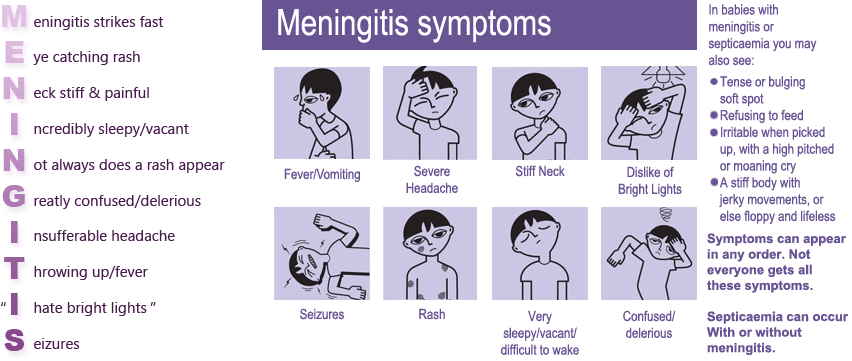 2007.9.7.cprl1-0707.
2007.9.7.cprl1-0707.
The viewpoints expressed in this article are those of the author(s) and do not necessarily reflect the views and policies of the AMA.
Author Information
Alexandra Leigh, MD is a third-year resident in internal medicine at the University of Alabama at Birmingham. She is a graduate of Princeton University and the University of Alabama School of Medicine. She looks forward to being a chief resident and hopes for a career in academic medicine.
Meningitis – Treatment – NHS
People with suspected meningitis will usually need to have tests in hospital and may need to stay in hospital for treatment.
Tests in hospital
Several tests may be carried out to confirm the diagnosis and check whether the condition is the result of a viral or bacterial infection.
These tests may include:
- a physical examination to look for symptoms of meningitis
- a blood test to check for bacteria or viruses
- a lumbar puncture – where a sample of fluid is taken from the spine and checked for bacteria or viruses
- a CT scan to check for any problems with the brain, such as swelling
As bacterial meningitis can be very serious, treatment with antibiotics will usually start before the diagnosis is confirmed and will be stopped later on if tests show the condition is being caused by a virus.
Treatment in hospital
Treatment in hospital is recommended in all cases of bacterial meningitis, as the condition can cause serious problems and requires close monitoring.
Severe viral meningitis may also be treated in hospital.
Treatments include:
- antibiotics given directly into a vein
- fluids given directly into a vein to prevent dehydration
- oxygen through a face mask if there are any breathing difficulties
- steroid medication to help reduce any swelling around the brain, in some cases
People with meningitis may need to stay in hospital for a few days, and in certain cases treatment may be needed for several weeks.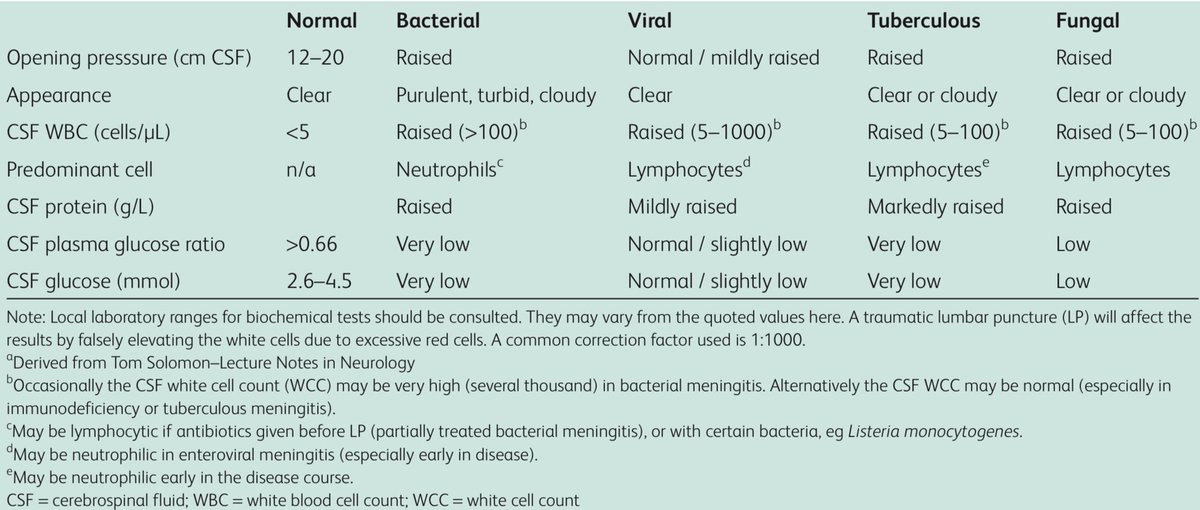
Even after going home, it may be a while before you feel completely back to normal.
Additional treatment and long-term support may also be required if any complications of meningitis occur, such as hearing loss.
Treatment at home
You’ll usually be able to go home from hospital if you or your child has mild meningitis and tests show it’s being caused by a viral infection.
This type of meningitis will normally get better on its own without causing any serious problems. Most people feel better within 7 to 10 days.
In the meantime, it can help to:
- get plenty of rest
- take painkillers for a headache or general aches
- take anti-sickness medicine for any vomiting
Preventing the spread of infection
The risk of someone with meningitis spreading the infection to others is generally low.
But if someone is thought to be at high risk of infection, they may be given a dose of antibiotics as a precautionary measure.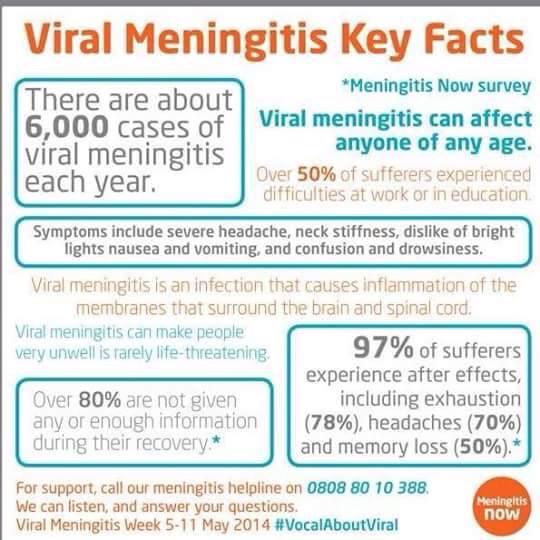
This may include anyone who’s been in prolonged close contact with someone who developed meningitis, such as:
- people living in the same house
- pupils sharing a dormitory
- university students sharing a hall of residence
- a boyfriend or girlfriend
People who have only had brief contact with someone who developed meningitis will not usually need to take antibiotics.
Page last reviewed: 08 March 2019
Next review due: 08 March 2022
Viral Meningitis | CDC
Viral meningitis (when meningitis is caused by a virus) is the most common type of meningitis. Most people get better on their own without treatment. However, anyone with symptoms of meningitis should see a doctor right away because any type of meningitis can be serious. Only a doctor can determine if someone has meningitis, what is causing it, and the best treatment. Babies younger than 1 month old and people with weakened immune systems are more likely to have severe illness from viral meningitis.
Causes
Non-polio enteroviruses are the most common cause of viral meningitis in the United States. Only a small number of people infected with enteroviruses will develop meningitis.
Other viruses that can cause meningitis are
People at Risk
People of any age can get viral meningitis. However, some people have a higher risk of getting the disease, including:
- Children younger than 5 years old
- People with weakened immune systems caused by diseases, medications (such as chemotherapy), and recent organ or bone marrow transplantations
Babies younger than 1 month old and people with weakened immune systems are also more likely to have severe illness.
How It Spreads
Close contacts of someone with viral meningitis can become infected with the virus that made that person sick. However, these close contacts are not likely to develop meningitis. Only a small number of people who get infected with the viruses that cause meningitis will develop viral meningitis.
Viruses that can cause meningitis spread in different ways. Learn more about how the following viruses spread by visiting CDC’s websites:
Symptoms
Common symptoms in babies
- Fever
- Irritability
- Poor eating
- Sleepiness or trouble waking up from sleep
- Lethargy (a lack of energy)
Common symptoms in children and adults
- Fever
- Headache
- Stiff neck
- Photophobia (eyes being more sensitive to light)
- Sleepiness or trouble waking up from sleep
- Nausea
- Irritability
- Vomiting
- Lack of appetite
- Lethargy (a lack of energy)
Most people with mild viral meningitis usually get better on their own within 7 to 10 days.
Initial symptoms of viral meningitis are similar to those for bacterial meningitis. However, bacterial meningitis is usually severe and can cause serious complications, such as brain damage, hearing loss, or learning disabilities.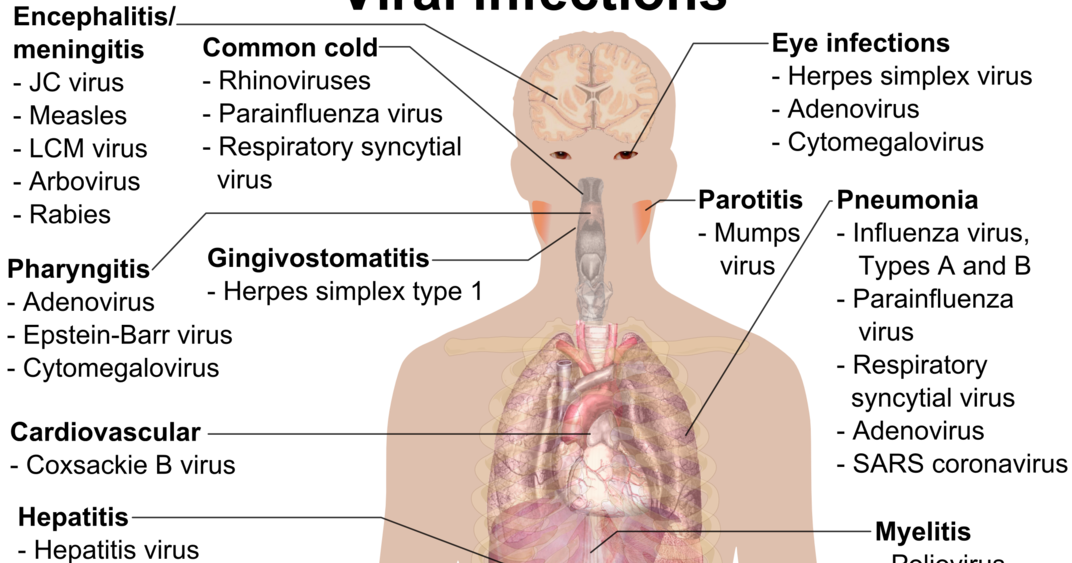 The pathogens (germs) that cause bacterial meningitis can also be associated with another serious illness, sepsis. Sepsis is the body’s extreme response to infection. Without timely treatment, sepsis can quickly lead to tissue damage, organ failure, and death.
The pathogens (germs) that cause bacterial meningitis can also be associated with another serious illness, sepsis. Sepsis is the body’s extreme response to infection. Without timely treatment, sepsis can quickly lead to tissue damage, organ failure, and death.
See a doctor right away if you think you or your child might have meningitis. A doctor can determine if you have the disease, what is causing it, and the best treatment.
Diagnosis
Doctors diagnose meningitis by ordering specific lab tests on specimens from a person suspected of having meningitis. If a doctor suspects meningitis, he or she may collect samples for testing by
- Swabbing your nose or throat
- Obtaining a stool sample
- Taking some blood
- Drawing fluid from around your spinal cord
Treatment
In most cases, there is no specific treatment for viral meningitis. Most people who get mild viral meningitis usually recover completely in 7 to 10 days without treatment.:max_bytes(150000):strip_icc()/meningitis-diagnosis-20-5ae0c022ae9ab8003740634d.png) Antiviral medicine may help people with meningitis caused by viruses such as herpesvirus and influenza.
Antiviral medicine may help people with meningitis caused by viruses such as herpesvirus and influenza.
Antibiotics do not help viral infections, so they are not useful in the treatment of viral meningitis. However, antibiotics do fight bacteria, so they are very important when treating bacterial meningitis.
People who develop severe illness, or are at risk for developing severe illness, may need care in a hospital.
Prevention
There are no vaccines available in the United States to protect against non-polio enteroviruses, which are the most common cause of viral meningitis. The best way to help protect yourself and others from non-polio enterovirus infections is to
- Wash your hands often with soap and water for at least 20 seconds, especially after changing diapers or using the toilet
- Avoid close contact, such as touching and shaking hands, with people who are sick
- Clean and disinfect frequently touched surfaces
- Stay home when you are sick and keep sick children out of school
Vaccines can protect against some diseases, such as measles, mumps, chickenpox, and influenza, which can lead to viral meningitis.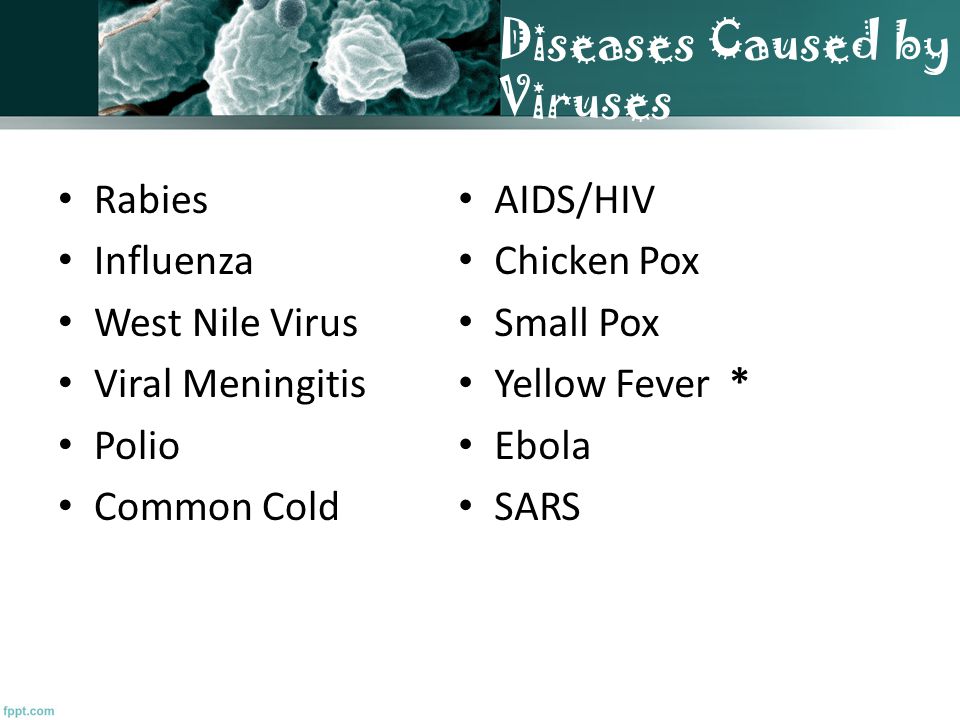 Make sure you and your child are vaccinated on schedule.
Make sure you and your child are vaccinated on schedule.
Avoid bites from mosquitoes and other insects that carry diseases that can infect humans.
Control mice and rats. If you have a rodent in or around your home, follow appropriate cleaning and control precautions.
Top of Page
What’s the difference between bacterial and viral meningitis?
Meningitis can be a very scary word for people to hear. It is important to know that there are different types of meningitis. The different types have different implications in terms of treatment and the risk of passing it on, as well as what the outcome for the patient might be.
Meningitis means inflammation of the meninges (meninges is the medical term for lining of the brain). Inflammation of the meninges, or meningitis, is most often caused by an infection, but can be caused by other things such as medications or other medical conditions.
Meningitis that is caused by an infection is normally caused by either a bacteria or a virus. This blog will explain the main differences between the two.
This blog will explain the main differences between the two.
What is viral meningitis?
Viral meningitis is the most common type of meningitis in adults and older children. It can be caused by many different viruses, but the most common are the herpes simplex virus (normally the same type of virus that causes genital herpes), the chickenpox or shingles virus (also known as varicella zoster virus), and the enterovirus. Out of these, enteroviruses are the most common. The MRF fact sheet on viral meningitis provides more information about these different types.
Viral meningitis presents with similar symptoms to bacterial meningitis such as fever, headache, dislike of lights and neck stiffness. It can present with a rash, but this is normally quite different to the rash seen in bacterial meningitis with meningococcal disease.
Viral meningitis is almost never life-threatening.
What is bacterial meningitis?
Bacterial meningitis is less common than viral, but it can still happen to anyone of any age.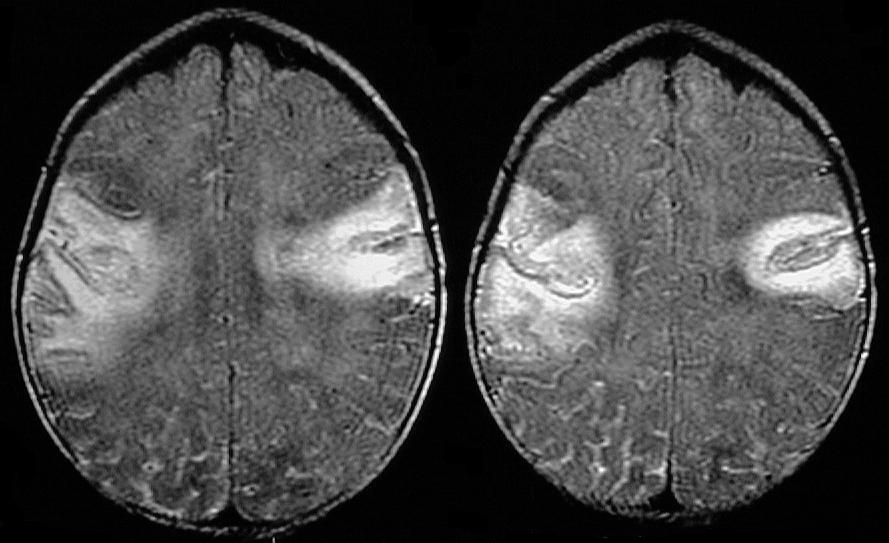 Many different bacteria can cause meningitis but the most common worldwide are meningococcal, pneumoccocal, Haemophilus influenzae. Bacterial meningitis can occur alongside sepsis, which is the more life threatening form of the disease and often involves the bacteria invading the blood as well. Sepsis can occur with or without bacterial meningitis.
Many different bacteria can cause meningitis but the most common worldwide are meningococcal, pneumoccocal, Haemophilus influenzae. Bacterial meningitis can occur alongside sepsis, which is the more life threatening form of the disease and often involves the bacteria invading the blood as well. Sepsis can occur with or without bacterial meningitis.
Bacterial meningitis and sepsis are serious, life threatening illnesses. The first symptoms are often non-specific and include fever, vomiting, headache and feeling unwell. Limb pain, pale skin, and cold hands and feet often appear earlier than the rash, neck stiffness, dislike of bright lights and confusion.
An image of the meningococcal bacteria, which is the leading cause of bacterial meningitis in the UK and Ireland.
How can you tell the difference between viral and bacterial meningitis?
To determine whether a person is suffering from viral or bacterial meningitis, doctors will have to perform a lumbar puncture.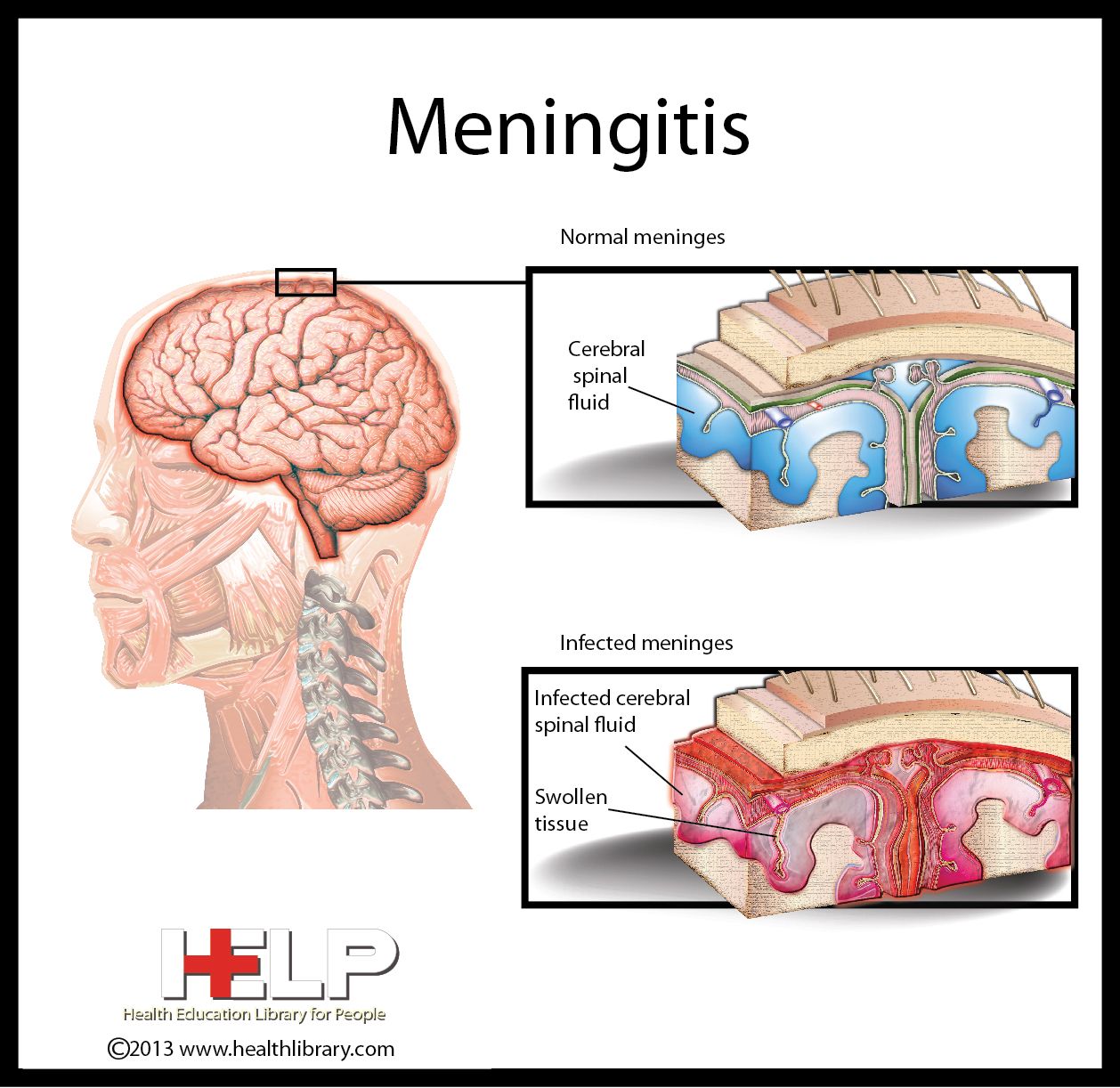 This involves collecting a sample of the cerebrospinal fluid (CSF) that surrounds the brain and spinal cord to find out what is causing the meningitis. If the results of the lumbar puncture identify a specific virus or bacteria then the diagnosis is clear. Often, however, the specific bug is not identified and the doctor will need to rely on several ‘clues’ in the CSF to decide. If they are unsure they will normally opt to treat for bacterial meningitis, ‘just in case’.
This involves collecting a sample of the cerebrospinal fluid (CSF) that surrounds the brain and spinal cord to find out what is causing the meningitis. If the results of the lumbar puncture identify a specific virus or bacteria then the diagnosis is clear. Often, however, the specific bug is not identified and the doctor will need to rely on several ‘clues’ in the CSF to decide. If they are unsure they will normally opt to treat for bacterial meningitis, ‘just in case’.
The clues that the doctor uses are the levels of white cells, protein and glucose in the CSF. Typically in bacterial meningitis the white cell count is much higher than in viral meningitis (and is a different type of white cell), the protein is much higher and the glucose is much lower than in viral meningitis.
It is important to know whether the cause is viral or bacterial as this will determine how to treat the patient. In bacterial meningitis antibiotics are essential but in viral meningitis antibiotics will not have any effect.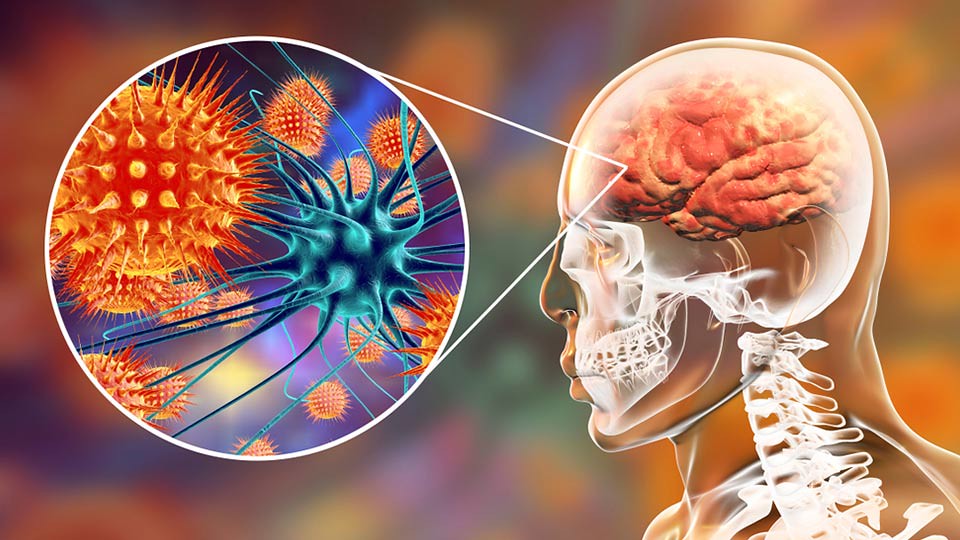 Unfortunately there are no proven treatments for viral meningitis, however, sometimes a doctor might give a drug called Aciclovir which has been shown to be of benefit in other conditions caused by the herpes simplex virus or the chickenpox virus.
Unfortunately there are no proven treatments for viral meningitis, however, sometimes a doctor might give a drug called Aciclovir which has been shown to be of benefit in other conditions caused by the herpes simplex virus or the chickenpox virus.
Patients with viral meningitis may feel quite unwell for a while after the illness, with symptoms of fatigues, headache and anxiety. However, viral meningitis almost never kills people. Bacterial meningitis on the other hand can be rapidly fatal or cause devastating after effects, so it is important to treat these cases with antibiotics as soon as possible.
Viral meningitis is not passed on to others by being in close contact – unlike the meningococcal form of bacterial meningitis – so no preventive treatment is needed for relatives.
What should I do if I think I have meningitis?
If you suspect that you, or someone you know, might be suffering from meningitis it is important to seek medical attention as soon as possible. Trust your instincts and don’t be afraid to seek a second opinion.
Trust your instincts and don’t be afraid to seek a second opinion.
How Meningitis Is Diagnosed in Its Early Stages – Meningitis Center
Meningitis is an extremely serious, often life-threatening disease — yet its early symptoms often resemble the flu, and that can make it difficult to diagnose.
There are five types of meningitis, each caused by different factors. The two most common forms of the disease are viral meningitis and bacterial meningitis. Viral meningitis often resolves on its own without treatment. But if you have bacterial meningitis, early diagnosis and treatment is vital. If treatment is delayed because symptoms are mistaken for the flu, there can be devastating consequences.
Symptoms such as sudden fever, severe headache, and a stiff neck are possible indications of meningitis. Anyone experiencing these symptoms should seek immediate medical attention — it’s definitely a case of better safe than sorry. “The onset may be very sudden, and the progression even faster,” says Malcolm Thaler, MD, an internist with One Medical Group in New York City.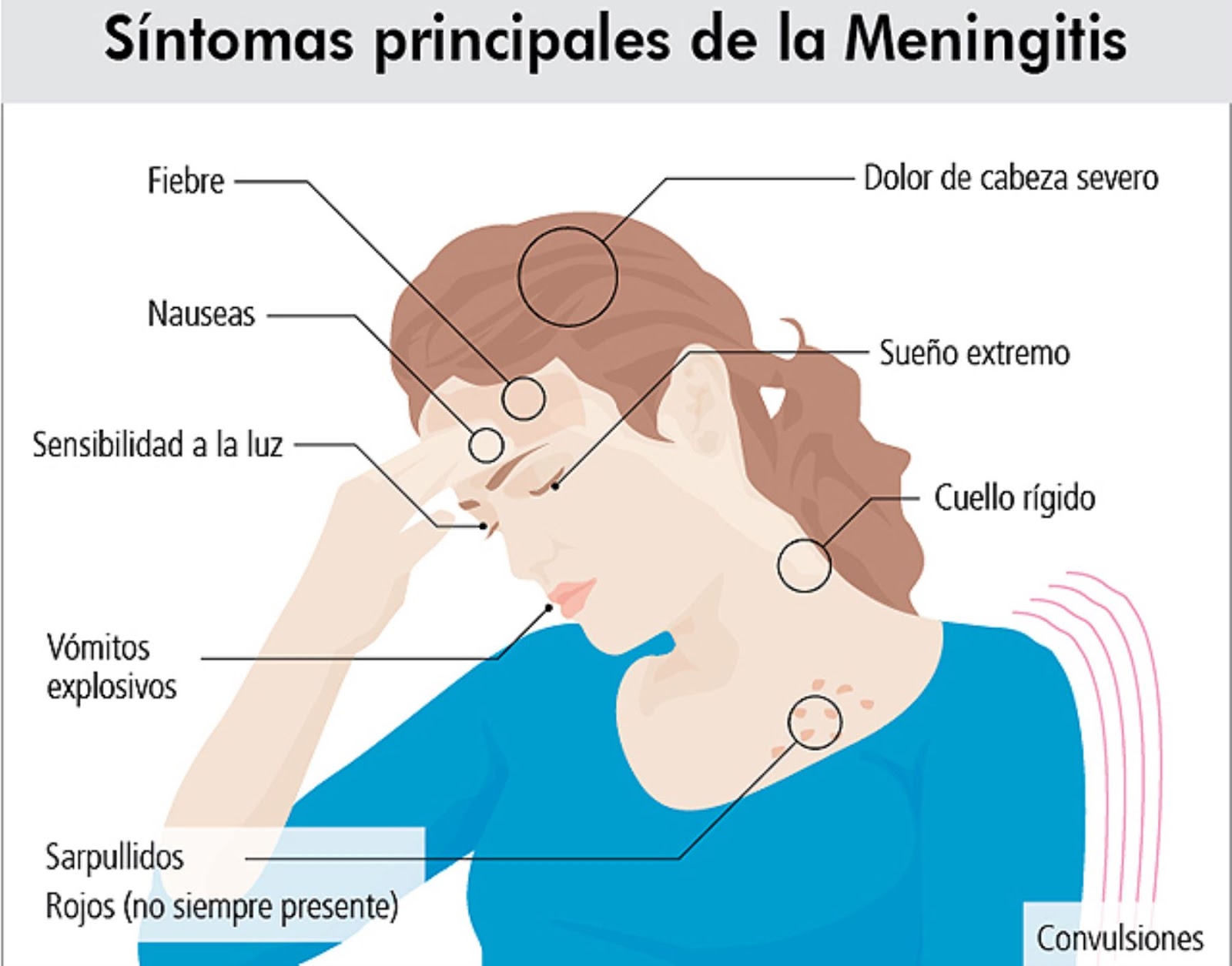
Making a Meningitis Diagnosis
The first step of diagnosing meningitis is a physical exam, and there are specific indicators for which your doctor can check. Your doctor may look for Brudzinski’s sign, an indicator in which stiffness in your neck causes you to automatically flex your knees and hips when your doctor forces you to flex your neck. “The doctor may also look for Kernig’s sign,” says Dr. Thaler. This means you could feel severe pain in your thigh if you try to extend your leg,
If meningitis is suspected, may start you on antibiotics right away, even before determining the type of meningitis you have. “Since the culture for virus and bacterial growth often takes a few days to come back, it would be very dangerous to wait for that information,” says Cathy Clements, MD, a primary care physician and internist at Mercy Medical Center in Baltimore. “That’s why the most important thing a doctor can do when a patient comes in with suspected meningitis is to go ahead and initiate treatment.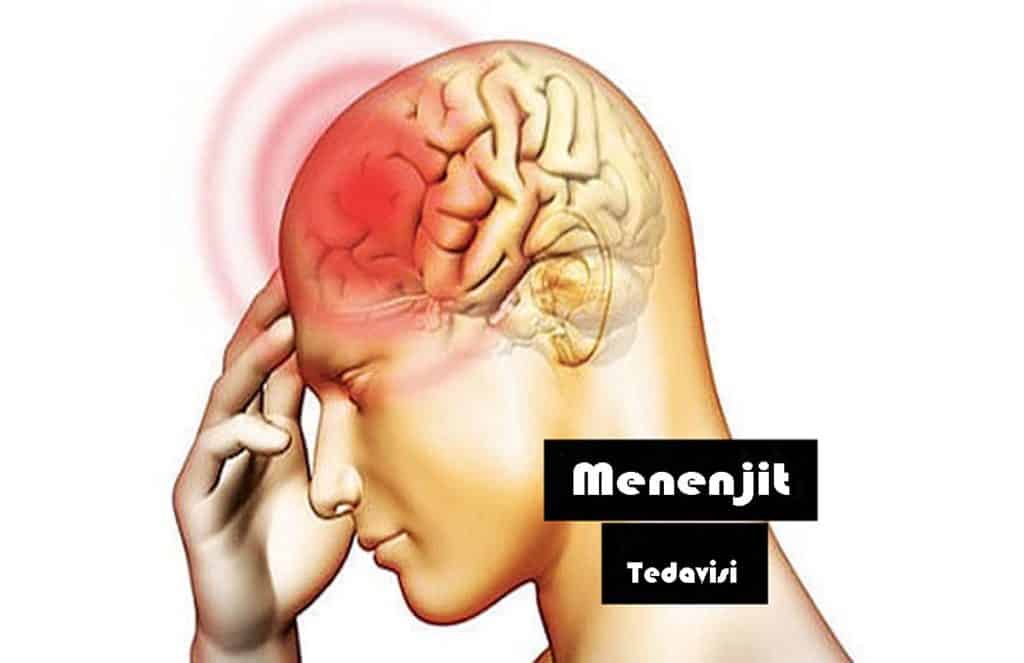 ” Antibiotics are prescribed based on the most common pathogens known to cause meningitis in certain age groups, Dr. Clements explains.
” Antibiotics are prescribed based on the most common pathogens known to cause meningitis in certain age groups, Dr. Clements explains.
Additional Diagnostic Tests for Meningitis
When a meningitis diagnosis is suspected, there are several tests your doctor can run to confirm a diagnosis:
Blood tests. Standard blood tests to analyze antibodies and foreign proteins can alert your doctor to the presence of infection.
CT scan. A scan of the brain can reveal inflammation, internal bleeding, or other abnormalities. It can also detect conditions such as brain swelling, abscess, or hemorrhage, which could make a lumbar puncture unsafe.
Lumbar puncture. The inflammation associated with meningitis is most often caused by an infection of the cerebral spinal fluid, which surrounds the brain and spinal cord. A lumbar puncture, also known as a spinal tap, enables your doctor to collect a sample of this cerebrospinal fluid from a small area in your lower back.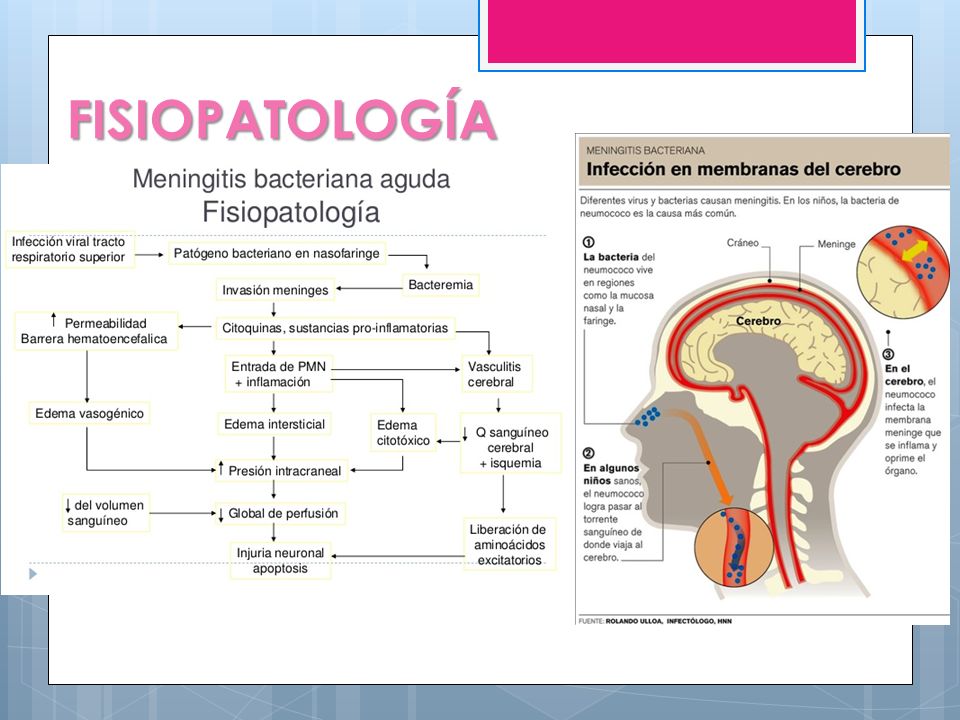 This fluid is sent to the lab and analyzed to determine if there is an infection. “We look for white blood cells, blood, protein, and glucose,” Clements says. “The results of these tests — and their ratios to each other — can give us an idea if the meningitis is bacterial, viral, or fungal.” She explains that bacterial meningitis tends to have more neutrophils (a certain type of white blood cell) and lower glucose levels. Viral meningitis tends to have more lymphocytes (another type of white blood cell) and more protein. “We also send it for culture for viruses and bacteria growth, which often takes a few days to come back,” she says.
This fluid is sent to the lab and analyzed to determine if there is an infection. “We look for white blood cells, blood, protein, and glucose,” Clements says. “The results of these tests — and their ratios to each other — can give us an idea if the meningitis is bacterial, viral, or fungal.” She explains that bacterial meningitis tends to have more neutrophils (a certain type of white blood cell) and lower glucose levels. Viral meningitis tends to have more lymphocytes (another type of white blood cell) and more protein. “We also send it for culture for viruses and bacteria growth, which often takes a few days to come back,” she says.
Once all the results are in, the medical team should have the information needed for a more precise diagnosis and further treatment.
90,000 Meningitis in children. What is important for parents to know!
There are a lot of infections that can cause meningitis, so it is important to know the features of the manifestation of this disease, its treatment and prevention.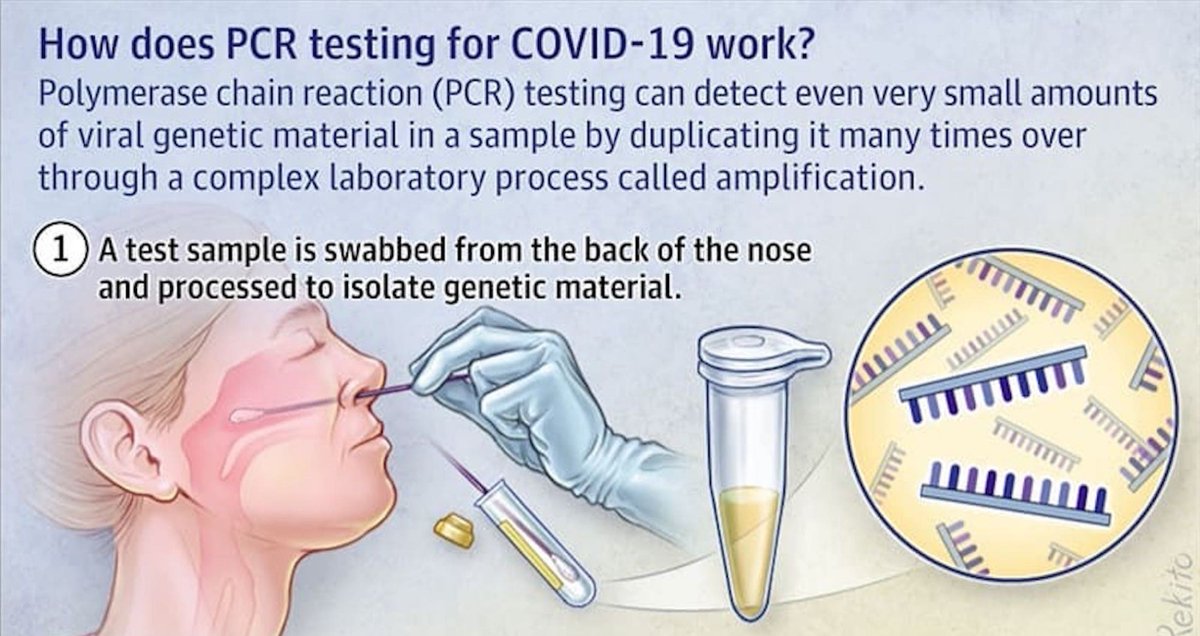
What is meningitis?
Meningitis is an inflammatory disease that affects the meningeal membrane of the brain. There are a lot of pathogens that can cause meningitis. Depending on the pathogen, infectious meningitis is divided into bacterial and viral.It is very important to understand as early as possible which pathogen the disease is associated with. Bacterial meningitis is more often severe and leads to significant damage to the nervous system, and sometimes death. Viral meningitis usually progresses more favorably and often does not cause severe complications.
Meningitis symptoms
Persistent increase in body temperature from 39C
Headache
Tension in the neck, inability to bend the head to the chest (so-called meningeal symptoms)
Nausea and vomiting
Disorders of consciousness (drowsiness, confusion, loss of consciousness)
Photophobia
In newborns, meningitis can have the following features :
Difficulty feeding (sluggish sucking, regurgitation).

Diarrhea.
Bulging fontanelle.
Unusual lethargy, drowsiness.
Blurring of the clinical picture, absence of reliable meningeal symptoms.
The course of bacterial and viral meningitis may differ. For example, bacterial meningitis is often accompanied by seizures and a specific dark “star-shaped” rash on the skin.Viral meningitis can develop against the background of common colds – a runny nose, cough, as well as infections with a rash of another nature – red or pink.
What to do if a child suspects meningitis?
Meningitis is an urgent condition, you need to immediately consult a doctor and undergo treatment in an inpatient setting.
Diagnosis of meningitis
Blood test.
Lumbar puncture is a procedure in which a small amount of cerebrospinal fluid (CSF) surrounding the brain and spinal cord is extracted through a small puncture in the lumbar region.
 The composition of this fluid changes with meningitis and, according to the characteristic changes, the doctor determines the cause of the disease.
The composition of this fluid changes with meningitis and, according to the characteristic changes, the doctor determines the cause of the disease.Computed tomography. With meningitis, some changes in the brain are diagnosed only with the help of a computed tomogram.
The EMC Children’s Clinic has all the capabilities for fast and high-quality diagnosis of meningitis: its own round-the-clock clinical diagnostic laboratory, round-the-clock tomographic complex, where, if necessary and under the supervision of experienced anesthesiologists, small patients are examined under medication sleep.If hospitalization is required for examination and treatment, the clinic has its own hospital. Comfortable wards for a joint stay of a mother and a child, modern original preparations, individual meals, a round-the-clock nursing post, creating a friendly and comfortable atmosphere during a hospital stay (play areas, a playground on the street) – all this contributes to a quick recovery.
Treatment of meningitis
Bacterial meningitis is treated with antibiotics, which are usually given intravenously.Additionally, drugs are used to maintain vital functions, for example, to normalize blood pressure. In many cases, hormones are used to prevent permanent hearing loss from bacterial meningitis.
Viral meningitis cannot be treated with antibiotics. antibiotics do not work against viruses. Treatment consists of resting, drinking plenty of fluids (or intravenous fluids), and symptomatic therapy (headache medications).
Determining the exact nature of the disease may take several days. This is a forced delay, so the doctor usually prescribes an antibiotic right away, without waiting for the results of the diagnosis. This is done on the basis of the possible presence of bacterial meningitis, which will not wait for the diagnosis to be confirmed.
Can I get meningitis?
Bacteria and viruses can be transmitted from person to person, so there is such a danger.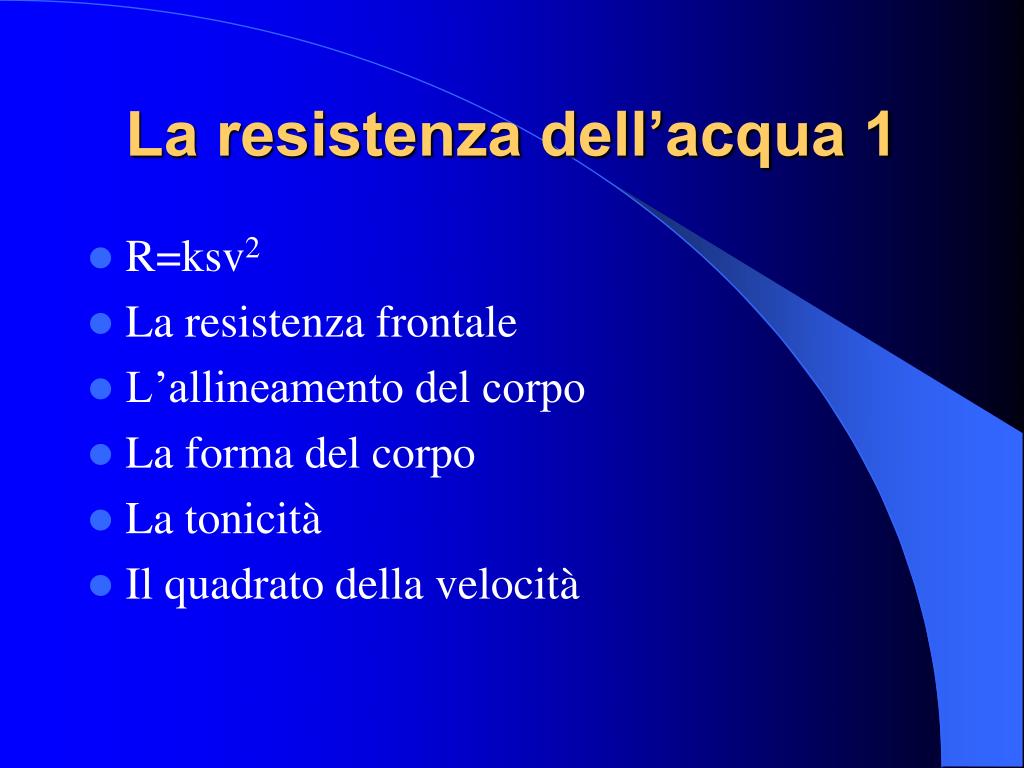
Prevention of meningitis
Vaccination.Meningitis caused by meningococci (Neisseria meningitidis) and Haemophilus influenza type b, pneumococci, etc. are very widespread. EMC Children’s Clinic uses certified European vaccines to create reliable protection against meningitis. In particular, for the prevention of meningitis caused by meningococci, the “MENACTRA” vaccine produced by Sanofi Pasteur (USA) is used – a modern conjugated 4-valent meningococcal vaccine with 10 years of clinical experience, the only reliable and safe protection against meningococci A, C, Y and W , used in children over the age of 9 months and adults.
Prevention of infection: exclusion of contact with the sick, hand hygiene, use of individual dishes, cutlery and personal hygiene products.
For prophylaxis, in case of contact with a sick person, antibiotics can sometimes be prescribed. This is done only by a doctor and only when necessary. Self-medication and uncontrolled medication can be more dangerous than the disease itself.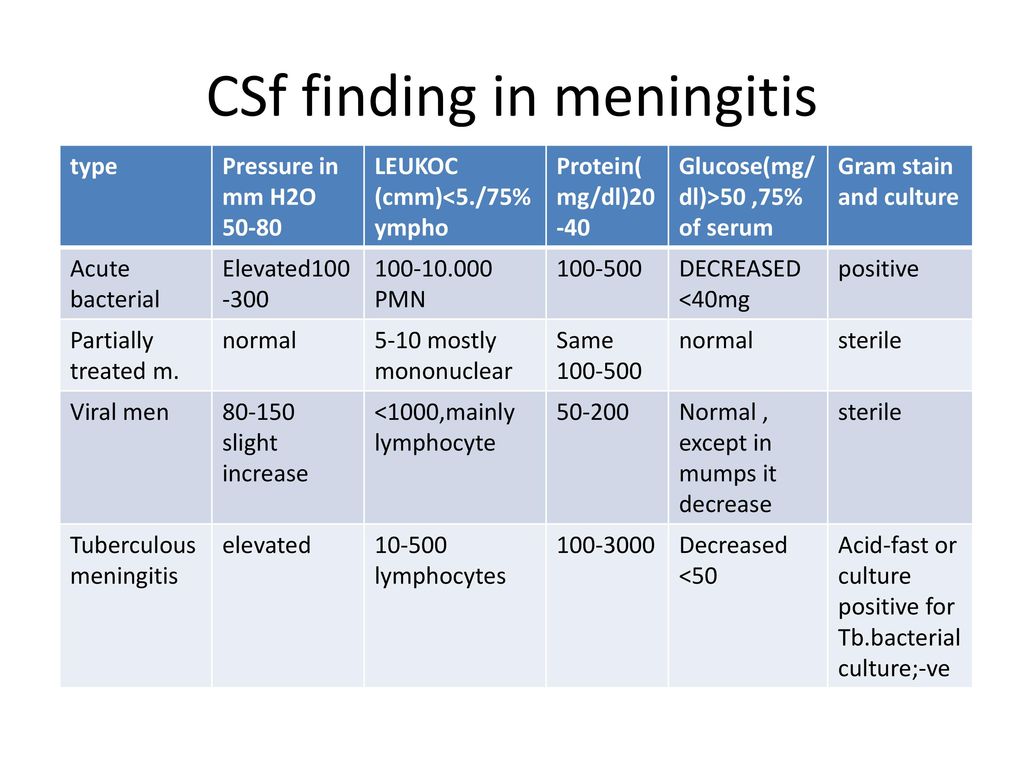
How to recognize and treat meningitis
What is the danger of meningitis, how to recognize it in time and how to treat it, says “Gazeta.Ru “.
In winter, it is customary to fear meningitis, and indeed, it often occurs as a complication of respiratory diseases. However, meningitis can also begin as an independent disease. The main peak of the incidence occurs in the winter-spring period. The factors affecting seasonal morbidity are climatic conditions (sharp temperature fluctuations, high humidity) and changes in the nature of communication between people in the winter (prolonged stay in closed rooms, insufficient ventilation, etc.).etc.).
Meningitis is a pathological process in which the lining of the brain becomes inflamed.
Meningitis is mainly divided into serous and purulent. With serous, lymphocytes predominate in the cerebrospinal fluid, with purulent ones, the number of neutrophils, one of the types of leukocytes, increases.:max_bytes(150000):strip_icc()/meningitis-overview-2632037_final-cee83b2ec2344403975479ec3099bedd.png) Purulent meningitis is primary or secondary, when the infection enters the meninges from foci of infection in the body itself or with a skull injury. There are also tuberculous, syphilitic, hemorrhagic meningitis and meningitis caused by certain pathogens – listrella, fungi, etc.p.
Purulent meningitis is primary or secondary, when the infection enters the meninges from foci of infection in the body itself or with a skull injury. There are also tuberculous, syphilitic, hemorrhagic meningitis and meningitis caused by certain pathogens – listrella, fungi, etc.p.
Despite the abundance of pathogens and other causes of meningitis, its general symptoms are similar. Headache is the most common symptom that occurs in almost all patients. It is associated with irritation of the sensitive endings of the trigeminal nerve and the nerve endings of the autonomic nervous system.
Stiffness (hardness) of the occipital muscles is also common, along with fever, altered states of consciousness, and sensitivity to light or sound. For an accurate diagnosis, it is necessary to take the cerebrospinal fluid for analysis.
The clinical picture may vary.
So, with meningococcal meningitis, the disease begins acutely – with high fever and chills. Already on day 1-2, the main symptoms of meningitis appear, a hemorrhagic rash may form on the body.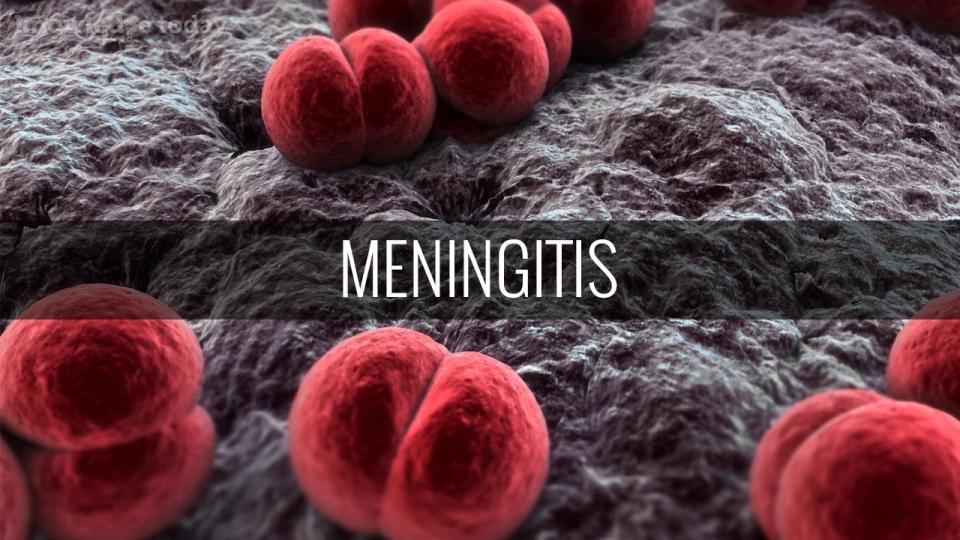
Pneumococcal meningitis is preceded by otitis media, sinusitis or pneumonia in about half of cases. Symptoms appear somewhat later than with meningococcal meningitis, but even with early hospitalization, the disease progresses rapidly, there are disorders of consciousness, convulsions.
Meningitis is often difficult to diagnose if it occurs while taking antibiotics. The patient’s temperature is kept within the range of 37.5-38.5 ° C, the headache becomes less intense. However, as the infection spreads, a sharp deterioration occurs, and neurological symptoms appear. Such patients are at risk – deaths are the highest among them.
Viral meningitis may begin with symptoms consistent with the associated infection. The picture of meningitis develops later.Unlike bacterial meningitis, with viral fever is moderate, and symptoms may appear on 3-4, or even 5-7 days of illness. With the exception of a severe headache and feeling unwell, the rest of the symptoms are practically not pronounced.
Tuberculous meningitis begins with fever, headache and vomiting appear after a few days. By the end of the second week, symptoms of general brain damage develop. If untreated, the patient dies by the end of the month.
The diagnosis is made on the basis of the clinical picture and the results of additional studies.
The analysis of cerebrospinal fluid is of paramount importance – it is he who allows you to identify the causative agent of the disease and choose a therapy.
Meningitis is treated with antibiotics, antiviral or antifungal agents, depending on the pathogen. Sometimes steroids are used to prevent complications from severe inflammation.
A late start of treatment can lead to a protracted and recurrent course of the disease, since the pathogen, being in the compacted areas of pus, is little available to the action of antibiotics.Recurrent cases of meningitis are associated with complications and persistent residual effects.
Meningitis, especially if treatment is delayed, can cause serious complications: deafness, epilepsy, hydrocephalus, and mental development problems in children. Death is possible. Some forms of meningitis (caused by meningococci, Haemophilus influenzae type b, pneumococci, or mumps virus) can be prevented by vaccinations.
Death is possible. Some forms of meningitis (caused by meningococci, Haemophilus influenzae type b, pneumococci, or mumps virus) can be prevented by vaccinations.
It is extremely important to recognize the disease in time – in 2014, a young American woman died from meningitis, the symptoms of which doctors confused with a panic attack.
The girl went to the hospital with complaints of numbness in the body on one side and confusion of speech, but the doctors mistook these symptoms for a panic attack and sent the girl home. The next day, a friend found her unconscious on the bathroom floor. On a new examination, the doctors revealed a stroke and meningitis, but it was too late. She spent the rest of her days connected to an artificial life support system. Realizing that no improvement was foreseen, the parents agreed to turn it off.
Resident of Spain survived after being misdiagnosed, but was left without arms and legs.
A man came to the doctor after he felt a fever and pain in the jaw.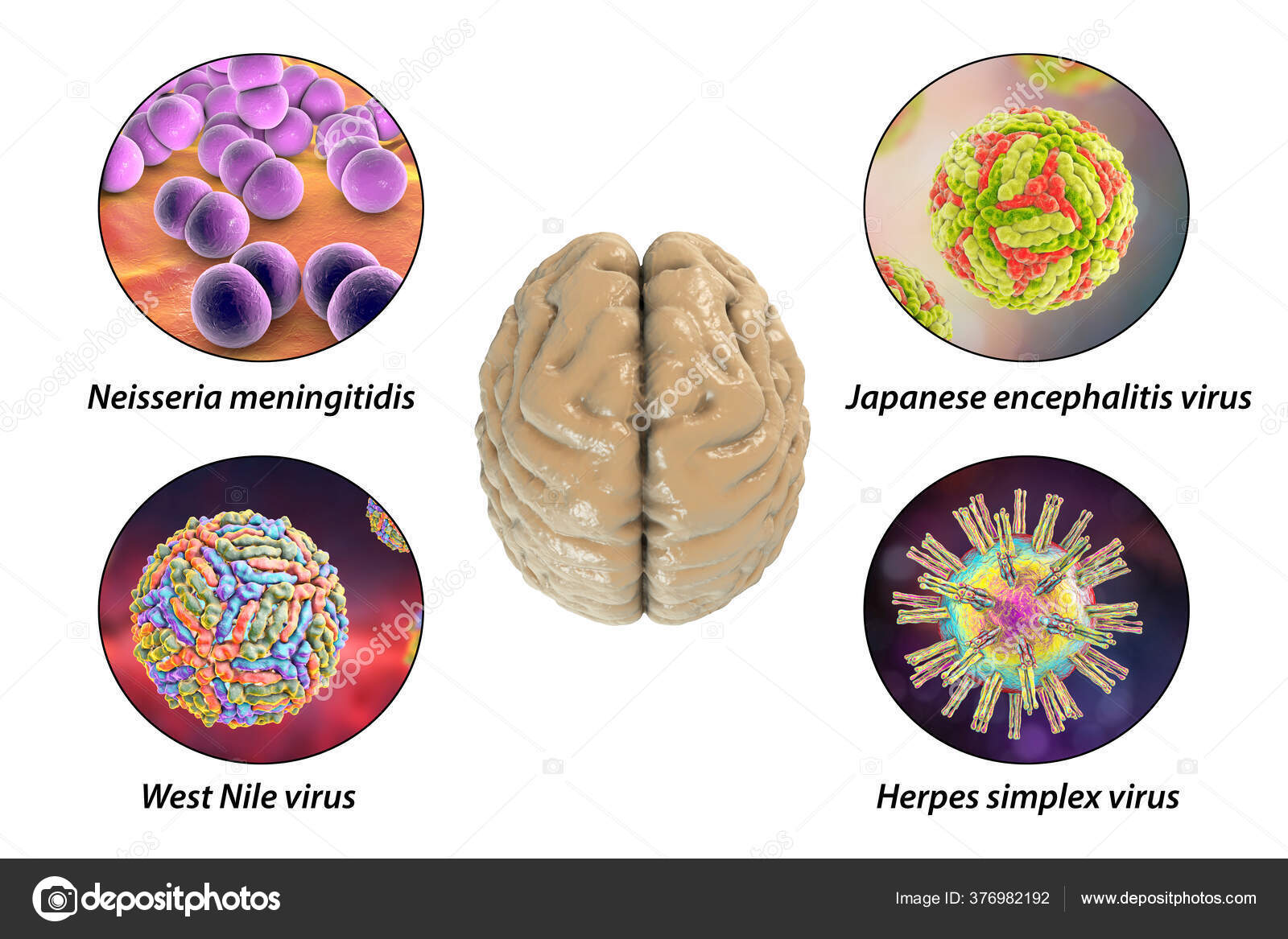 However, the doctor, not finding any abnormalities in the patient’s analyzes, decided that it was a common cold. Soon the patient began to vomit, the temperature rose greatly, and the whole body was covered with brown spots. It turned out that he had not a cold, but meningitis. Due to the fact that the infection spread throughout the body, doctors were forced to amputate the Spaniard’s arms and legs.
However, the doctor, not finding any abnormalities in the patient’s analyzes, decided that it was a common cold. Soon the patient began to vomit, the temperature rose greatly, and the whole body was covered with brown spots. It turned out that he had not a cold, but meningitis. Due to the fact that the infection spread throughout the body, doctors were forced to amputate the Spaniard’s arms and legs.
And in San Diego, 26-year-old TV presenter died from swine flu meningitis.The unconscious woman was found by her friend. The woman was quickly taken to the hospital, but it was not possible to save her. Doctors noted that at this time in San Diego there was an outbreak of swine flu. Adults become infected with it more often than the elderly and children – adults have the lowest vaccination rates.
90,000 🧬 What is the danger of childhood meningitis?
Can you get meningitis if you go for a walk in cold weather without a hat? We deal with all aspects of this disease together with the children’s neurologist GMS Clinic Maria Ostrovskaya on the pages of the Internet portal “Healthy Children”
Before moving on to the anatomy of this dangerous disease, we cannot but tell about two cases that occurred recently in the UK and caused a great public outcry, which led to mass protests of citizens in defense of children from meningitis.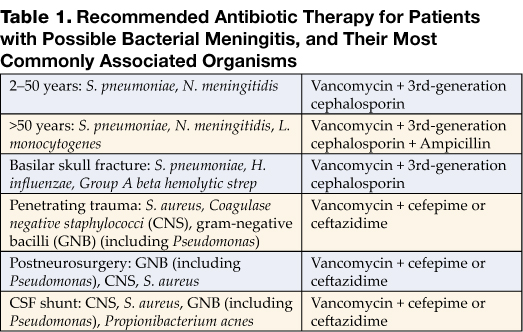
It all started when a picture of a rash-covered girl lying on a hospital bed, which her mother posted on the Internet, attracted the attention of UK news agencies. The girl was two years old, her name was Faye Burdette, and she died of strain B meningitis after 11 days in the hospital. The BBC reports that following this tragic incident, a campaign has been launched to call for the total vaccination of children against strain B meningitis. The petition has collected more than 400,000 signatures.It is worth noting here that the UK became the first country in the world to speak out to protect children from this dangerous disease with the introduction of the meningitis B vaccine called Bexsero.
Another well-publicized history of the child’s illness in the UK is also linked to meningitis, this time strain W. Former England rugby team captain, 2003 World Cup champion Matt Dawson said his family had to go through “two weeks of hell.” while his two-year-old son was struggling with the disease, the BBC reports.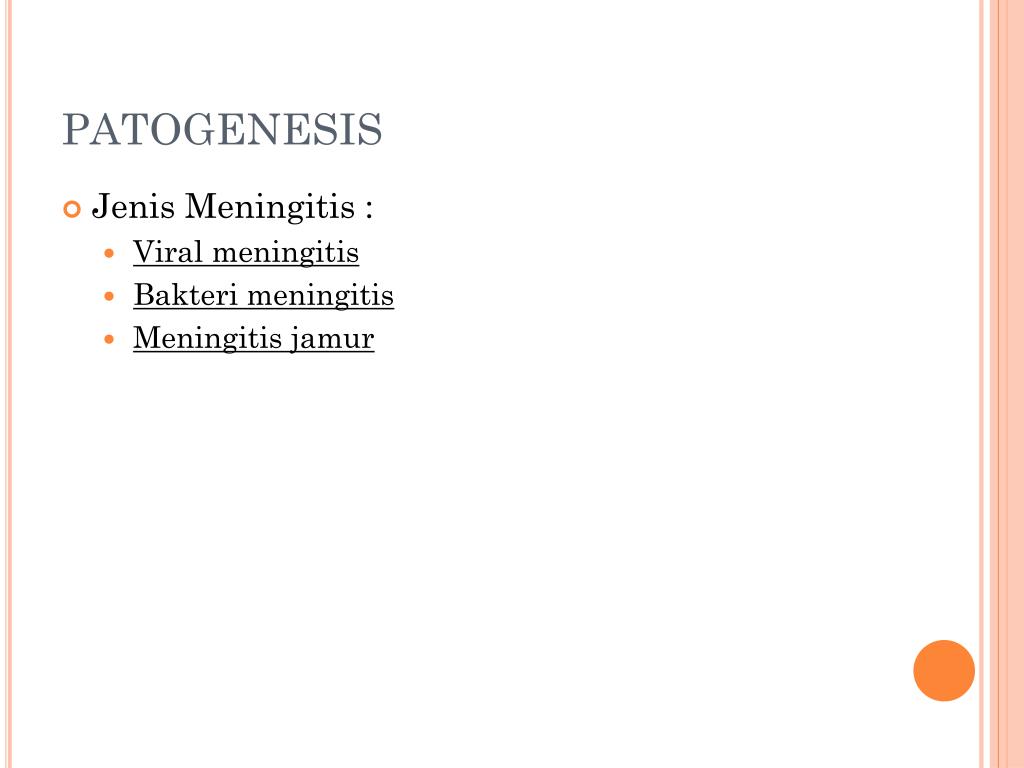 Luckily for Dawson and his family, everything ended well and the boy recovered. The former England player then also publicly spoke out in support of a petition for a global vaccination against meningitis. Matt posted photos of the sick child for everyone to see so that people understand the seriousness of this disease.
Luckily for Dawson and his family, everything ended well and the boy recovered. The former England player then also publicly spoke out in support of a petition for a global vaccination against meningitis. Matt posted photos of the sick child for everyone to see so that people understand the seriousness of this disease.
The Meningitis Research Foundation UK reports that about 1 in 10 cases of meningitis is fatal, and about 1 in 3 survivors will have long-term consequences such as amputation of limbs, deafness, epilepsy and intellectual impairment.There are five main types of meningococcal infection: groups A, B, C, W, and Y. This bacterial infection most often affects children under one year of age. In this age group, the incidence is 22 per 100,000 children. Symptoms include intense fever with cold hands and feet, blurred consciousness, vomiting, and headaches. There are effective vaccines today for various groups of meningitis, but the meningitis B vaccine did not appear until 2015.-Step-9.jpg/aid525259-v4-728px-Treat-Meningitis-(Spinal-Meningitis)-Step-9.jpg) The incidence of meningitis B among children 1 to 4 years old is 1 in 20,000.
The incidence of meningitis B among children 1 to 4 years old is 1 in 20,000.
In the UK, the meningitis B vaccine is currently available free of charge only to children born on or after May 1, 2015. This is due to the fact that newborns and children under five years of age are most at risk of the disease, with the peak incidence at the age of 5 months. Bexsero protects against infection with meningococcal group B bacteria, which cause more than 90% of meningococcal infections in young children. The cost of vaccinations in private clinics is £ 75, but in some clinics it can go up to £ 150.Three such vaccinations are required for vaccination, with demand for the vaccine outstripping supply, so the manufacturer promises to increase supplies.
James Stewart, visiting professor at the University of Bristol and a consultant to the World Health Organization (WHO), warns: “We need to find out how well this vaccine works. It may not be time to expand the program yet. ”
There is currently no vaccine against meningitis B in Russia. However, vaccination against other types of meningitis is available to the public.
However, vaccination against other types of meningitis is available to the public.
What is meningitis?
Meningitis is the most common infectious disease of the central nervous system. The term “meningitis” includes diseases in which the meningeal membranes are inflamed – these are the membranes of the brain. Inflammation of the very substance of the brain is called encephalitis and, unfortunately, often accompanies meningitis.
Causes of the disease
There is an opinion that children are small adults, but from the point of view of pediatrics, this is not the case.The causative agents of meningitis in adults and children differ.
Meningitis is caused by microorganisms – viruses or bacteria. In many cases, meningitis is caused by the same organisms that cause common respiratory infections with a runny nose, cough, and sore throat. Bacterial meningitis is also called purulent meningitis. They are usually the most severe. Common pathogens are meningococcus, pneumococcus, Haemophilus influenzae, streptococcus.
Viral meningitis, which was previously also called aseptic, is caused by a variety of viruses, including enteroviruses, Coxsackie viruses, influenza, parainfluenza, parvoviruses, as well as those that are called pathogens of “childhood infections” – measles, rubella, mumps, etc.
What is the danger of meningitis?
Meningitis is a very dangerous disease. It is dangerous not only for its course and high mortality in the acute period, but also with formidable consequences – deafness, convulsions, mental impairment, paralysis, etc. Before the era of antibiotics, an entire village could go deaf due to an outbreak of meningitis. The sooner the diagnosis is made and treatment is started, the higher the chance of avoiding the consequences. The greatest danger is posed by bacterial meningitis and, first of all, meningococcal meningitis.Meningococcal meningitis is one of the manifestations of generalized meningococcal infection, which complicates its course in 10-12% of cases. Meningococcal infection is widespread and causes diseases with a varied clinical picture – from a small runny nose to a fulminant course of infection with high mortality and possible very serious consequences. The disease is most severe in children under 2 years of age.
Meningococcal infection is widespread and causes diseases with a varied clinical picture – from a small runny nose to a fulminant course of infection with high mortality and possible very serious consequences. The disease is most severe in children under 2 years of age.
Based on my own experience, I can say that meningitis occurs in the practice of any doctor, in any city, in any segment of the population and at any time of the year.According to Rospotrebnadzor for 2015, there were 608 cases of generalized meningococcal infection in children under 17 years of age. 10-12% of the total number of diseases usually falls on meningococcal meningitis, that is, somewhere around 1 in 2000 children under 17 years of age. The number of cases of meningococcal disease has increased since 2014. Enteroviral meningitis (the most common viral) – 25 people per 1000 children under 17 years of age in 2015. If we take into account that an average of 500-600 people study at school, it turns out that it is quite possible to meet with this disease.
How does the disease occur?
Anyone can get sick. Meningitis is more common in children under 5 years of age and in the elderly. This is due to the peculiarities of the reaction of the immune system.
- The first way is through blood. A person has a so-called blood-brain barrier, which prevents infection from entering the brain from the blood. In some cases, the mechanism for some reason fails and the pathogenic organism gets through the blood to the membranes of the brain and begins to multiply there.
- Another way is direct infection with inflammation of the internal structures that are close to the meninges: ear (otitis media), inflammation of the mastoid process (mastoiditis), inflammation of the paranasal sinuses (sinusitis). Why it happens for some and not for others is still unknown. This depends on many factors, including genetic predisposition.
You can get infected in various ways, most often it is an airborne pathway, through direct contact or unwashed hands (you need to sneeze into a handkerchief, wash your hands – often). In this case, the person who is the source of the infection does not necessarily have meningitis, he may have a common cold. Moreover, with meningococcal infection, it is not necessary to get sick, many adults and children are asymptomatic carriers, that is, they constantly release bacteria into the environment without knowing it.
In this case, the person who is the source of the infection does not necessarily have meningitis, he may have a common cold. Moreover, with meningococcal infection, it is not necessary to get sick, many adults and children are asymptomatic carriers, that is, they constantly release bacteria into the environment without knowing it.
Can you get meningitis if you go for a walk in winter without a hat?
Contrary to popular belief, you cannot get meningitis while walking without a hat in winter or walking in sneakers in the snow.In order to catch such a serious infection, contact with a microorganism is needed. Our body is a self-regulating stable system, and it is easier for a child’s body to overheat than overcool. Of course, there are conditions in which the chance of getting sick is higher – these are, first of all, severe immunodeficiencies, various chronic diseases and taking drugs that reduce the immune response.
Symptoms of the disease
From experience I can say that there are many “classical” cases, but there are also many exceptions to the rules.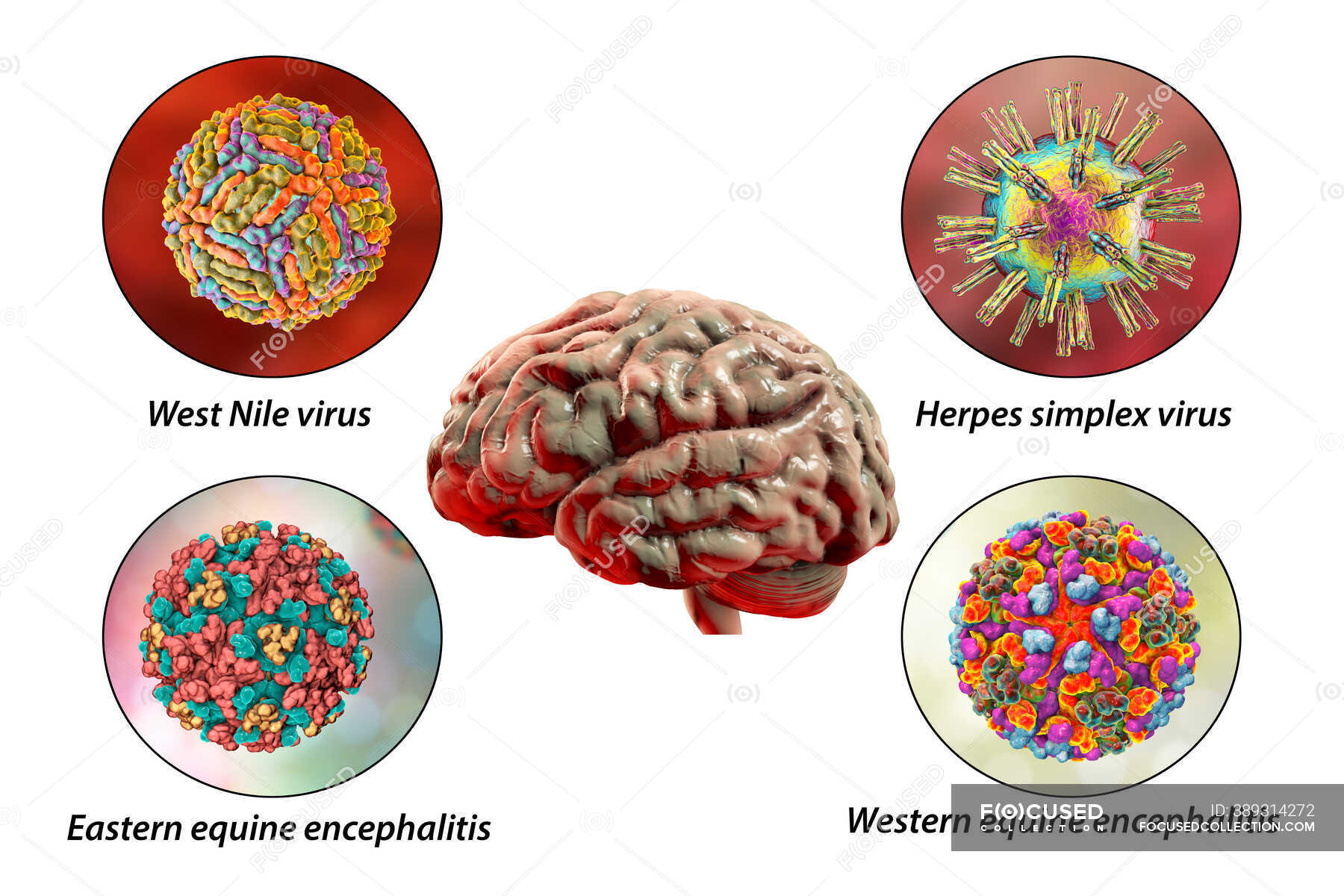 Therefore, it is almost impossible to talk about all the various symptoms and subtleties of diagnosing this disease within the framework of this article.
Therefore, it is almost impossible to talk about all the various symptoms and subtleties of diagnosing this disease within the framework of this article.
Meningitis can start as a common infection with a high fever, severe headache, and vomiting. A characteristic symptom is the tension of the neck muscles with the inability to touch the chest with the chin, lying position with bent legs, drowsiness, photophobia; in young children – head thrown back, inexplicable cry; bulging of the large fontanelle can sometimes be seen.Could these be signs of a severe infection without meningitis? In theory, yes, but in English there is a great phrase that well describes the approach to diagnosis in this case: “This is meningitis, until proven otherwise.” One of the symptoms of meningococcal infection, which causes very severe meningitis, is a bright red or burgundy rash that does not disappear with pressure – any infection with a rash must be urgently examined by a doctor!
With meningitis, symptoms can develop very quickly, therefore, by the time impairments of consciousness, seizures and other severe symptoms appear, it is advisable to be in the hospital.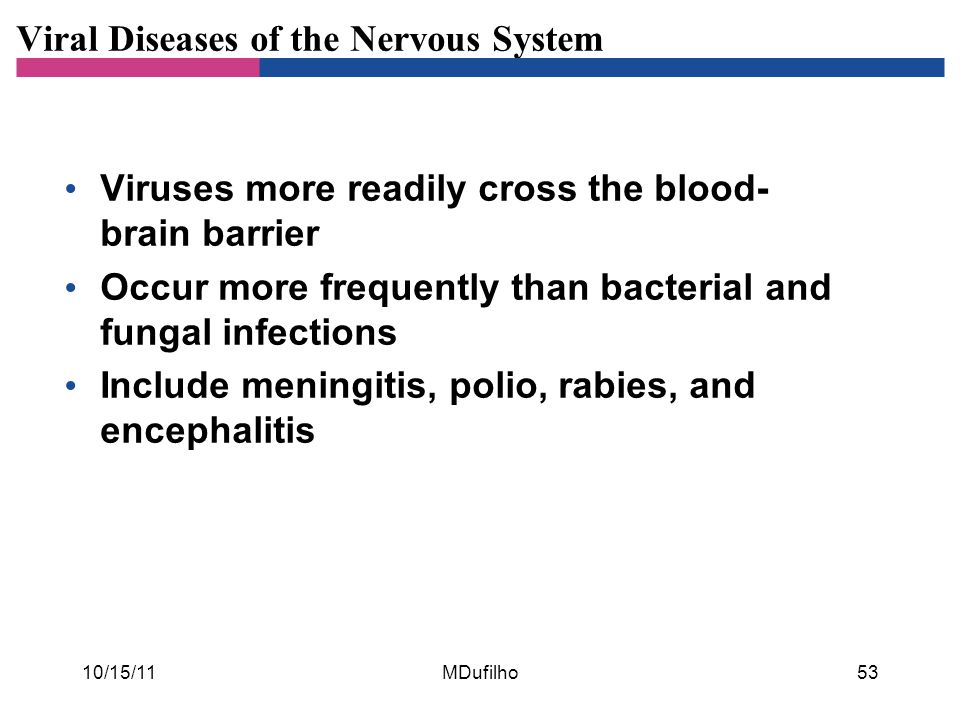
Viral meningitis, as a rule, proceeds more easily and more often without complications, but always requires close observation, so patients are admitted to the hospital. Treatment of meningitis in general should be carried out only in hospitals, and often a person is hospitalized in special infectious diseases departments. For the correct diagnosis and determination of treatment tactics (whether an antibiotic is needed, which one is needed, etc.), there is only one way to confirm the diagnosis – a spinal tap.A puncture is made in the back and some liquid is taken that surrounds the spinal cord and membranes. It should be noted that the puncture is made in the area of the lower back where the spinal cord is no longer there, so it is impossible to touch the spinal cord itself. This procedure is no more difficult than taking blood from a vein, but because of the name, parents are often frightened. If you are asked for consent to this procedure, you do not need to refuse, this means that the condition is very serious and the bill can go on for hours.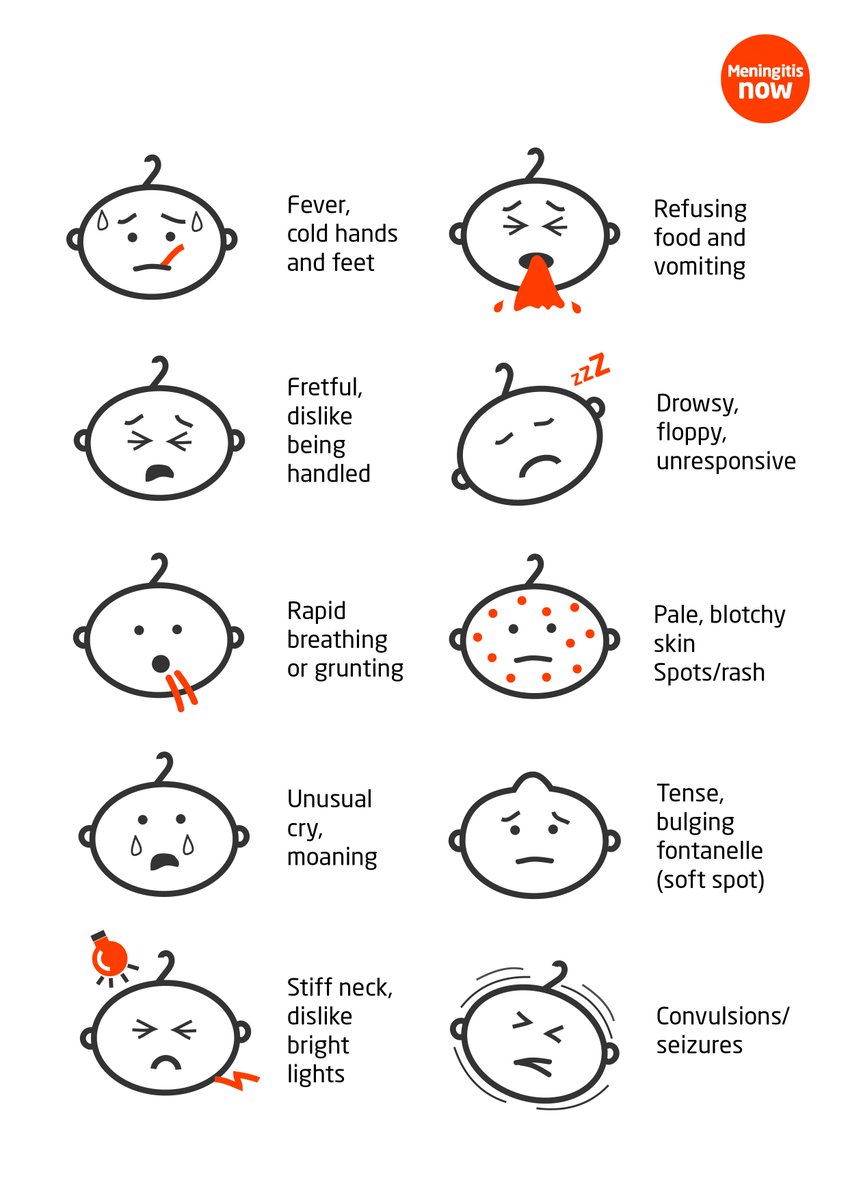
I hope that this disease will bypass your loved ones, and I want to warn you – be attentive to your children during the illness, and if it seems to you that the course of the infection in the child is unusual, the above symptoms have appeared, the child is very difficult and gets worse – call a doctor or an ambulance and do not be afraid to hear the reproach that you are too anxious parents.And don’t worry about the doctors, they are used to it.
How to protect yourself if there is a patient with meningitis nearby?
If a person in your environment is sick with meningitis, you must immediately isolate from him and consult a doctor for advice. Vaccination, antibiotic prophylaxis, or other measures may be required depending on the microorganism that caused the disease. You may not need anything, but only a doctor decides this.
Disease prevention
There are vaccines for the main causative agents of meningitis – meningococcal infection, pneumococcus and group B hemophilus influenzae. Hemophilus influenzae is a part of multicomponent vaccines that are used for standard vaccinations in accordance with the calendar, as well as pneumococcal vaccine, which is administered to children under one year of age with revaccination at 1.5 years. Meningococcal vaccine is currently not included in the number of mandatory vaccinations, it is administered at will or when there are sick people in the person’s environment. Based on the experience of other countries, it can be argued that mass vaccination dramatically reduces (up to 80%) the number of cases of meningococcal infection, which causes very severe meningitis.There are several types of meningococci. Currently, there is a vaccine that protects against most of them – Menaktra. At first, the vaccine was administered only to children over 2 years old, but due to changes in its composition since 2015, it can be administered to a child from 9 months old. This is a big breakthrough, since it is young children who are at risk (the highest mortality rate from meningococcus before 2 years), which is why these “extra” 15 months are so important.
Hemophilus influenzae is a part of multicomponent vaccines that are used for standard vaccinations in accordance with the calendar, as well as pneumococcal vaccine, which is administered to children under one year of age with revaccination at 1.5 years. Meningococcal vaccine is currently not included in the number of mandatory vaccinations, it is administered at will or when there are sick people in the person’s environment. Based on the experience of other countries, it can be argued that mass vaccination dramatically reduces (up to 80%) the number of cases of meningococcal infection, which causes very severe meningitis.There are several types of meningococci. Currently, there is a vaccine that protects against most of them – Menaktra. At first, the vaccine was administered only to children over 2 years old, but due to changes in its composition since 2015, it can be administered to a child from 9 months old. This is a big breakthrough, since it is young children who are at risk (the highest mortality rate from meningococcus before 2 years), which is why these “extra” 15 months are so important.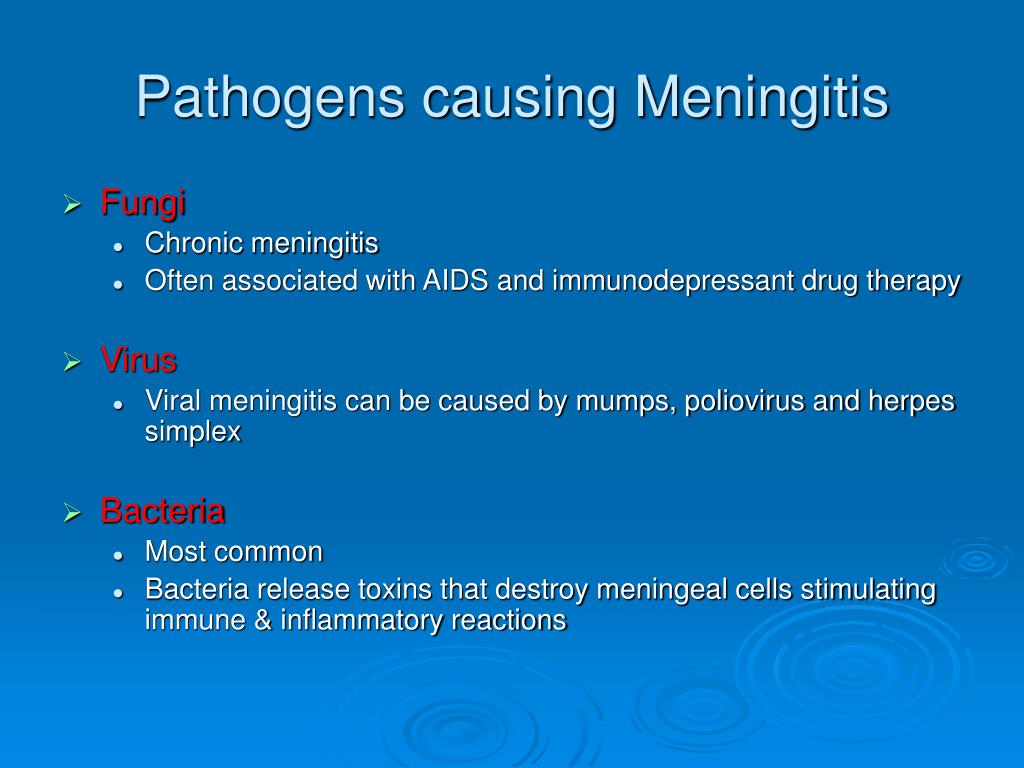 It is also very important that modern vaccines against meningococcus form long-term immunity.Recently, a vaccine against another strain of meningococcus, serotype B, has appeared. It is not yet available in the Russian Federation, but I hope that in the near future it will be possible to fully vaccinate against all serotypes of meningococcus.
It is also very important that modern vaccines against meningococcus form long-term immunity.Recently, a vaccine against another strain of meningococcus, serotype B, has appeared. It is not yet available in the Russian Federation, but I hope that in the near future it will be possible to fully vaccinate against all serotypes of meningococcus.
Meningitis is also caused by other infections – chickenpox, rubella, mumps, influenza, measles, for which there are also vaccines. Thanks to vaccination, we can protect ourselves and our children as much as possible.
Source: healthy-kids.ru
Increased headache with head rotation as a test for acute meningitis in emergency situations
Why is the diagnosis of acute meningitis important on physical examination?
Meningitis is an inflammation of the tissues that protect the brain and spinal cord (meningeal membranes).Acute meningitis, especially bacterial and tuberculous meningitis, is potentially life-threatening and requires urgent diagnosis and early treatment.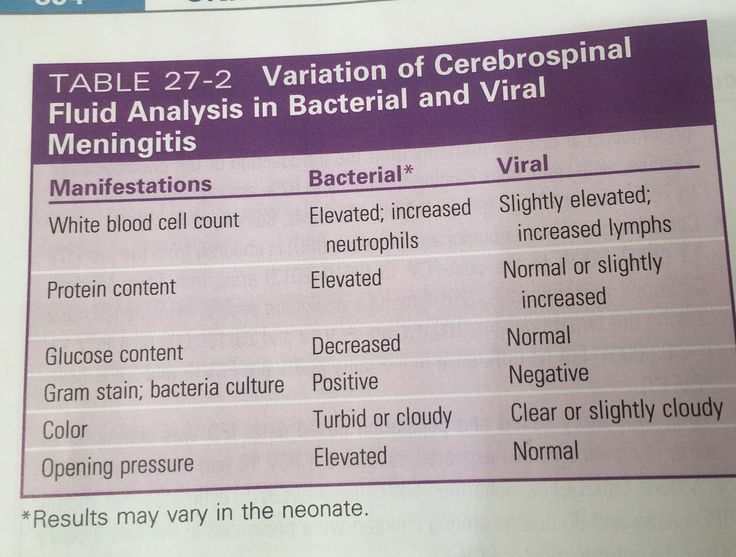
Diagnosis usually requires analysis of cerebrospinal fluid obtained by lumbar puncture. A lumbar puncture involves inserting a needle between the bones of the lumbar spine. A lumbar puncture is an invasive test that can cause headaches.
If the physical examination can accurately rule out the likelihood of acute meningitis, patients could avoid a lumbar puncture.However, traditional physical signs, such as an inability to tilt the head forward (neck stiffness), used in people with suspected meningitis, do not rule out acute meningitis.
What is the purpose of this review?
We aimed to assess the accuracy of the head rotation increase test for the diagnosis of acute meningitis in an emergency setting. The head rotation aggravation test is relatively new (1991) and less well-known than other physical examination tests.The headache aggravation test when rotating the head consists of turning the head in a horizontal plane at a frequency of two to three times per second.
What was investigated in this review?
We studied a headache aggravation test with head rotation in people with suspected meningitis in an emergency setting.
What are the main findings of this review?
We included nine studies with 1161 participants with possible acute meningitis.Five studies involved only adults, and four – both children and adults. Due to insufficient data, we were unable to conduct separate analyzes for adults and children.
How confident are we of the results of this review?
The sensitivity of the head rotation increase test does not appear to be sufficient to rule out the diagnosis of acute meningitis.
Who are the results of the review?
People with suspected acute meningitis.Most of the research has focused on emergency care, so there is no certainty that the test will work in primary care settings.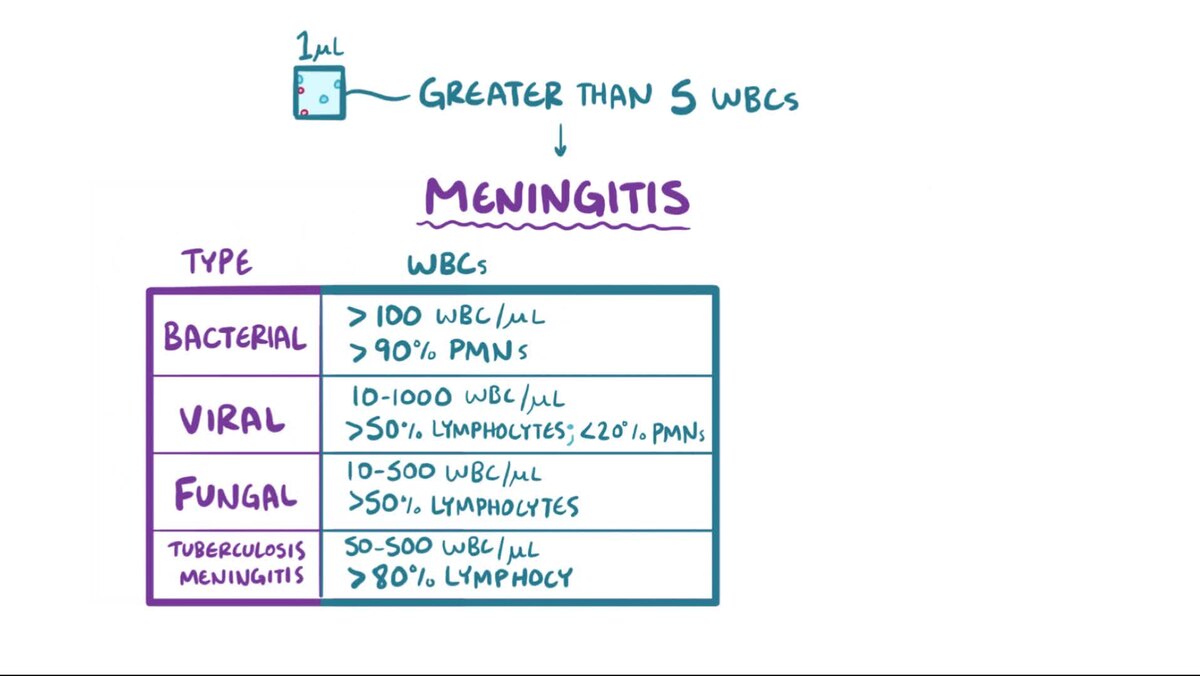 Most of the studies involved adults or adolescents; the youngest participant was 13 years old. There is no evidence that this test is applicable to children.
Most of the studies involved adults or adolescents; the youngest participant was 13 years old. There is no evidence that this test is applicable to children.
What conclusions can be drawn from this review?
Even when the head rotation increase test is negative, there is still the possibility of acute meningitis.
How relevant is this review?
We searched for studies published up to and including April 27, 2020.
What Rapid Coronavirus Tests Can (and Can’t) | Coronavirus of a new type SARS-CoV-2 and the COVID-19 pandemic | DW
If people can quickly and often test themselves for covid – for example, before every meeting with family or friends – the spread of coronavirus will soon be stopped.In recent weeks, this opinion can be read in the media, including in Germany. The most famous representative of this point of view in Germany is the famous politician – doctor-epidemiologist by training – Karl Lauterbach (Karl Lauterbach).
“Rapid self-sampling tests give a reliable result. Yes, they do not detect all cases of infection, but almost all cases of highly infectious patients,” the German politician argues. How correct is this point of view?
What are rapid coronavirus tests?
Rapid self-sampling tests are tests for viral antigens, which give a result within 15-30 minutes after taking the test.To obtain the result, no special equipment is required, so there is no need to send the analysis to the laboratory. In this case, the patient takes the analysis himself, without the participation of qualified medical personnel. To perform an antigen test, the patient needs a nasal and throat swab. The latest techniques allow tests to be carried out on the basis of saliva or feces.
Karl Lauterbach
Viral antigens are proteins that make up the virus, to which the strip of paper embedded in the express test reacts with a sharp color change, which indicates the presence of a virus. According to the website of the Robert Koch Institute (RKI), which coordinates the fight against infectious diseases in Germany, viral antigen tests are particularly reliable in detecting cases of high concentrations of coronavirus, which play the largest role in the spread of COVID-19.
According to the website of the Robert Koch Institute (RKI), which coordinates the fight against infectious diseases in Germany, viral antigen tests are particularly reliable in detecting cases of high concentrations of coronavirus, which play the largest role in the spread of COVID-19.
Rapid antigen tests should not be confused with antibody tests. Rapid tests are designed to diagnose whether a person has a coronavirus infection at the time of analysis, while antibody tests – based on a blood test – indicate a disease that has already been transferred in the past.
How justified are self-sampling tests
All rapid tests that have been certified so far in Germany are only allowed to be carried out by medical personnel. The reason is that, according to German experts, patients do not self-sample the analysis with sufficient quality – when it comes to a swab from the nasopharynx.
Nasopharyngeal swab is part of the coronavirus test
However, in recent weeks, this dominant opinion among doctors has begun to be questioned. According to a study carried out with the participation of the Berlin clinic “Charite”, the quality of self-sampling was significantly higher than expected. Thus, 146 patients with severe symptoms of the disease underwent PCR tests, and after that they were asked to make express texts on their own. As a result, corornavirus was detected in 40 people by PCR, and rapid tests revealed 91.4% of cases of infection. The small number of participants in this study does not allow it to be considered representative, but provides food for thought for specialists.
According to a study carried out with the participation of the Berlin clinic “Charite”, the quality of self-sampling was significantly higher than expected. Thus, 146 patients with severe symptoms of the disease underwent PCR tests, and after that they were asked to make express texts on their own. As a result, corornavirus was detected in 40 people by PCR, and rapid tests revealed 91.4% of cases of infection. The small number of participants in this study does not allow it to be considered representative, but provides food for thought for specialists.
Gradually, the official position of the German authorities also begins to change. So, until recently, the Minister of Health of the Federal Republic of Germany Jens Spahn spoke out against allowing the use of test kits for self-analysis for covid. But on February 16, the minister slightly corrected his position: he expects the admission in Germany in March of simple and easy-to-use rapid tests for home use. Meanwhile, as the Federal Institute of Medicines and Medical Products (Bundesinstitut für Arzneimittel und Medizinprodukte) reported a little earlier to DW, now this organization is already considering about 30 applications from manufacturers for admission in the country of home rapid tests.
Can rapid tests stop the pandemic?
However, the fact remains: while rapid tests for viral antigens, on average, only about 70% of those infected with coronavirus are detected. This means that a significant number of infected, having received a negative result, calm down and continue to live as usual, thereby endangering others. In addition, German doctors point out that even a true negative test result does not mean at all that the patient does not need to observe hygiene measures.
So, is Karl Lauterbach’s belief that even the identification of highly infectious patients with home rapid tests can stop a pandemic? It seems that this statement is too optimistic. As pointed out at the Paul-Ehrlich-Institut, which is responsible in Germany for the registration of vaccines and monitoring in this area, rapid tests are especially reliable in detecting those infected at the initial stage of the disease. At the same time, according to the RKI, it is still completely unclear at what stage of the disease the patient is most infectious. This means that patients may be contagious in the late stage of COVID-19, and rapid tests in this phase are not considered reliable.
At the same time, according to the RKI, it is still completely unclear at what stage of the disease the patient is most infectious. This means that patients may be contagious in the late stage of COVID-19, and rapid tests in this phase are not considered reliable.
Finally, it is difficult to assess the possibility of stopping the pandemic with home tests also because no reliable figures on their use yet exist. However, if the test manufacturers keep their word, then from March scientists in Germany will be able to get new statistics for analysis and reflection.
See also:
What vaccines mankind is vaccinated against coronavirus
BioNTech / Pfizer: the beginning of the mRNA revolution
the roots of Ugur Shahin and his wife Ozlem Tyurechi. Their firm BioNTech from Mainz entered into an alliance with the American giant Pfizer, and the vaccine began to be called “Pfizer’s” vaccine. In 2021, 2 billion doses will be released.The media started talking about a “revolution” in pharmaceuticals, since the first mRNA vaccine was created.
What vaccines mankind is vaccinated against coronavirus
Moderna: originally from Harvard University
The American biotechnology company Moderna also specializes in RNA technologies, which are considered a new word in medicine. Its headquarters are located in Cambridge, Massachusetts, near Harvard University, whose scientists founded the firm in 2010.The Moderna vaccine, created with financial support from the authorities, became the second registered in the US and the EU at the turn of 2020-21.
What vaccines mankind is vaccinated against the coronavirus
AstraZeneca has the “Oxford vaccine”
Oxford University scientists have entered into an alliance with the British-Swedish company AstraZeneca for clinical trials and the production of their vaccine. It provides a significant amount of vaccination for UK residents, fulfills a large EU order and actively works with developing countries, because the “Oxford vaccine” has a very low price.So, in India it is produced for the local market and for export.
What vaccines mankind is vaccinated against the coronavirus
“Sputnik V”: the very first registration
In August 2020, Russia announced that it was the first in the world to register a vaccine against coronavirus, called “Sputnik V”. Mass vaccination of the Russian population officially began in January 2021. This vector vaccine, developed by scientists from the Moscow Gamaleya Center, is being promoted to foreign markets by the Russian Direct Investment Fund (RDIF).The picture shows the arrival of the first batch in Bolivia.
What vaccines are humanity vaccinated against the coronavirus
Sinovac: a quiet competitor from China
Without unnecessary noise and detailed reports on the results of clinical trials, China has developed at least three vaccines. One of them, created on the basis of an inactivated (killed) coronavirus, was tested by Sinovac Biotech in several Asian countries, including Indonesia, which then purchased it.To set an example for his compatriots, the country’s president, Joko Widodo, was the first to be vaccinated.
What vaccines mankind is vaccinated against coronavirus
CureVac: printer for vaccines from Tesla
Registration of the second German mRNA vaccine is still postponed: it is not effective enough, CureVac, which has entered into an alliance with Bayer, reported in June 2021. This thwarts a plan to make it right in clinics around the world. A sample of a mobile printer created by his German subsidiary Tesla Grohmann was demonstrated by Elon Musk (center) to the Bundestag in the summer of 2020.
What vaccines are used to vaccinate humanity against coronavirus
Sanofi: two failures and aid to the European Union
The French pharmaceutical company Sanofi is one of the world’s largest vaccine manufacturers. But this time it failed twice: neither a joint development with the British GlaxoSmithKline, nor an attempt to create an mRNA vaccine have so far yielded the desired result. To help provide EU countries, its Frankfurt am Main plant (pictured) will release 125 million doses of BioNTech / Pfizer vaccine in the summer.
What vaccines the humanity is vaccinated against coronavirus
Johnson & Johnson: one dose is enough
One of the six manufacturers of vaccines against coronavirus, with which the EU has signed preliminary supply agreements, is the American corporation Johnson & Johnson. Her vector vaccine only requires one vaccine, not two, and is stored in conventional refrigerators. For the EU, the vaccine, registered on March 11, 2021, will be produced by the corporation’s Belgian subsidiary, Janssen.
Author: Andrey Gurkov
90,000 Meningitis. Symptoms, diagnosis, treatment, prevention
What is meningitis
Meningitis is an infectious disease in which the pia mater of the brain and / or spinal cord becomes inflamed. The inflammation causes swelling, which is the cause of the main symptoms of meningitis: headache, fever, and a stiff neck.
In most cases meningitis is caused by a viral infection, but bacterial and fungal infections can also lead to meningitis.
Bacterial meningitis is the second most common but most severe form of inflammation of the meninges. With bacterial meningitis, a fulminant course of the disease is possible, when only a few hours pass from the moment of the first symptoms to death.
Depending on the cause of the infection, meningitis can be of varying severity: from mild and spontaneous in a few weeks, to life-threatening fulminant course, requiring immediate aggressive medical intervention.
If you suspect meningitis in yourself or in a family member, you should seek medical help immediately. Timely treatment of bacterial meningitis can prevent serious complications.
Symptoms and signs of meningitis
The early manifestations of meningitis can be easily confused with the common ARVI or flu, the initial symptoms of meningitis can develop gradually – within a few hours or one to two days.
Symptoms of meningitis in a person over 2 years of age usually include:
- Sudden increase in body temperature
- Severe headache, which is difficult to mistake for another type of headache
- Stiffness of the occipital muscles (inability to tilt the head forward)
- Vomiting and / or nausea accompanying headache
- Confusion or difficulty concentrating
- Convulsions
- Excessive sleepiness
- Photophobia
- Severe loss of appetite
- Skin rash (eg, with meningococcal meningitis)
Symptoms of meningitis in young children
In newborns and children under 2 years of age, meningitis is usually not accompanied by typical symptoms: a sharp headache and stiff neck.
In this age group, meningitis usually presents with the following symptoms:
- High fever
- Constant monotonous crying
- Excessive sleepiness, or vice versa – excessive irritability
- Passivity, lethargy
- Refusal to eat
- Bulging fontanelles on the head
- Stiffness in the child’s body, especially in the neck
Babies with meningitis experience severe discomfort and are difficult to calm down, even with motion sickness.
When to see a doctor
See your doctor as soon as possible if someone in your family has any of the following symptoms:
- Fever
- Severe and severe headache
- Confusion
- Vomiting
- Stiff neck
Viral meningitis can go away without treatment, but bacterial meningitis is very serious, can grow very quickly, and requires immediate antibiotic therapy.
Delayed initiation of treatment for bacterial meningitis increases the risk of irreversible brain damage and even death of the patient. Remember that bacterial meningitis can be fatal within days or even hours.
There is no clinical way to distinguish viral meningitis from bacterial meningitis. To find out which agent, bacterial, viral or fungal, caused meningitis, you can only examine the cerebrospinal fluid (CSF).
In addition, if someone in the family develops meningitis, protective measures and other family members should be discussed with the doctor.The doctor may prescribe medications to prevent meningitis in healthy people (this applies to meningococcal infection).
Causes of meningitis
The most common cause of meningitis is a viral infection. Less commonly, meningitis can be caused by bacterial pathogens, fungal infections, or some non-infectious agents. Bacterial meningitis is the most life-threatening. Identifying the source of this infection (epidemiological investigation) is extremely important for preventing meningitis in others.If a family member has bacterial meningitis, doctors may recommend prophylactic medication for those who have not yet become ill.
Bacterial meningitis
Acute bacterial meningitis , as a rule, develops when bacteria enters the systemic circulation and from there into the cerebrospinal fluid. However, other pathways are also possible, such as compromising the integrity of the meninges as a result of a middle ear infection, sinus infection, skull fracture, or (rarely) after some surgery.
Many bacteria can cause meningitis. The most common causes of bacterial meningitis are:
- Streptococcus pneumoniae. This bacterium is the most common cause of bacterial meningitis in young children, adolescents and adults. Much more often than meningitis, this bacterium causes pneumonia or a middle ear infection (otitis media). To protect against this bacterium, there are protein-conjugated vaccines that have recently been included in the National Vaccination Schedule of the Russian Federation (Prevenar 13, Sinflorix), as well as a polysaccharide vaccine (Pnevmo 23).Read more: Pneumococcal infection
- Meningococcus (Neisseria meningitidis). This bacterium is the second most common cause of bacterial meningitis. Meningococcal meningitis usually develops after meningococci migrate from the upper respiratory tract through the bloodstream to the CSF. This infection is extremely contagious and very dangerous. Most often, it affects adolescents and young adults and is capable of causing local epidemics in college and university dormitories, boarding schools and barracks.There is also a vaccine to protect against meningococcus. There is currently a vaccine called Menaktra in the Russian Federation. However, it is not included in the National Calendar of the Russian Federation (only in the Moscow calendar), and therefore the child will receive it only if the parents wish to vaccinate him against meningococcus for a fee. Read more: Meningococcal meningitis
- Listeria. These bacteria are most commonly spread through soft cheeses, hot dogs and some types of fast food (due to insufficient heat treatment of these products).Fortunately, most healthy people infected with Listeria do not get sick. However, pregnant women, newborn babies, the elderly, and people with weakened immune systems may well develop this type of bacterial infection. Listeria is able to cross the placental barrier and lead to stillbirth or death of a newborn baby in the early neonatal period.
Viral meningitis
Viral meningitis is much more common than bacterial meningitis.The course of viral meningitis is usually milder and usually does not require specific treatment.
Enteroviruses are the most common cause of viral meningitis. The peak incidence of enterovirus infection occurs in late summer and early autumn.
In addition to enteroviruses, aseptic meningitis can cause: herpes simplex virus, HIV, mumps virus, West Nile virus, and other viruses.
Chronic meningitis
Chronic meningitis develops when slowly growing organisms enter the membranes and fluids surrounding the brain.Chronic meningitis can develop over two weeks or more. However, the signs and symptoms of chronic meningitis are quite similar to those of regular meningitis: headache, fever, vomiting, and cognitive impairment.
Fungal meningitis
Fungal meningitis is relatively rare and occurs in the form of chronic meningitis. However, in some cases, they can be quite similar to bacterial meningitis. Unlike all other forms of meningitis, fungal meningitis is not contagious at all and cannot spread from person to person.It usually develops in people with HIV / AIDS or other severe immunodeficiencies. Without adequate antifungal therapy, this type of meningitis usually leads to patient death.
Other causes of meningitis
Meningitis can also result from non-infectious causes, such as a reaction to a chemical or drug allergy. It can also be a symptom of some cancers and some inflammatory diseases such as sarcoidosis.
Risk factors for meningitis
Factors that increase the risk of meningitis include:
- Refusal to vaccinate. If you or your child is not vaccinated against meningococcus and / or pneumococcus, your risk of getting meningitis is significantly higher than that of people who are vaccinated.
- Age. Most cases of viral meningitis occur in children under 5 years of age. Bacterial meningitis usually affects people under the age of 20.
- Accommodation in closed institutions.College and university students living in hostels, personnel of military bases and educational institutions with army discipline, children in boarding schools and orphanages are at increased risk of meningococcal meningitis. This increased risk is most likely due to the increased likelihood of airborne transmission, and therefore meningococcus can spread very quickly in such facilities. That is why in the Russian Federation they are trying to vaccinate against pneumococcus and meningococcus, first of all, children and young people living in orphanages, boarding schools and barracks.
- Pregnancy. Pregnant women are at risk of contracting listeriosis. The unborn child is also at risk.
- Immunodeficiency states. First of all, this is AIDS, then alcoholism, diabetes mellitus, the use of immunosuppressants, etc. All this weakens the immune system and makes a person more susceptible to microorganisms that cause meningitis. The spleen is an important organ in the immune system, so removing it can also increase the risk of meningitis.
Complications of meningitis
Complications of meningitis can be very severe. The longer the sick person does not receive treatment, the higher the risk of complications. Most often, meningitis is complicated by:
Neurological damage:
- hearing loss
- convulsions
- Memory Impaired
- development of dementia
Damage to the substance of the brain:
- gait disturbance
- persistent convulsive syndrome
Other complications
- Renal failure
- Shock
- Death
Meningitis.Seeing a doctor
Suspected meningitis requires urgent or urgent medical attention. While waiting for your doctor’s appointment, paracetamol can be taken to reduce fever and relieve some headache. Aspirin and nonsteroidal anti-inflammatory drugs (NSAIDs) such as ibuprofen and nimesulide should be avoided as they can be harmful in meningitis. Don’t go to work and limit contact with people.
Diagnosis of meningitis
A doctor diagnoses meningitis based on history, physical examination, and some diagnostic tests.During your appointment, your doctor will check for signs of ear, throat, and skin infections along your spine.
He can order the following tests:
- Blood culture for sterility. Blood taken from a vein with maximum aseptic measures is sent to the laboratory and placed in a special container to see if microorganisms, in particular bacteria, begin to grow on it. The blood sample can also be Gram stained and examined under a microscope.
- Imaging Techniques.Plain X-rays and CT scans of the head, chest, or sinuses – may reveal swelling or inflammation. These tests can also help your doctor find infections in other areas of the body that may also be associated with meningitis.
- Lumbar puncture (lumbar puncture). Definitive diagnosis of meningitis requires analysis of cerebrospinal fluid (CSF), which can be obtained during a lumbar puncture. In patients with meningitis, CSF testing usually shows low blood sugar and increased white blood cell and protein counts.
- A CSF test will help your doctor determine the exact type of pathogen. If the doctor suspects bacterial meningitis, he or she will culture the CSF for sterility. If the doctor suspects viral meningitis, they will order a DNA-based test known as polymerase chain reaction (PCR). This is a key link in determining the most effective management tactics for meningitis.
Meningitis treatment
Treatment for meningitis depends on the type of pathogen.
Bacterial meningitis
Acute bacterial meningitis requires inpatient treatment with intravenous antibiotics, and during the recovery period – glucocorticosteroids, which will accelerate recovery and reduce the risk of complications such as cerebral edema and seizures. The choice of antibiotic is very important and depends on the analysis of the cerebrospinal fluid. Before an analysis of the cerebrospinal fluid is obtained, the doctor will treat with broad-spectrum antibiotics, and then, when he finds out the exact cause, he will try to choose the antibiotic that is most effective for the pathogen that led to meningitis in this case.If the cause of bacterial meningitis is mastoiditis (a purulent inflammation of the mastoid bone of the temporal bone located behind the ear), you may need surgery to open the cells of the mastoid bone.
Viral meningitis
Antibiotics are completely useless when treating viral meningitis. In most cases, it goes away spontaneously, in a few weeks. Treatment for mild cases of viral meningitis usually consists of bed rest, fluids, and pain relievers.
In severe viral meningitis, symptomatic and supportive therapy is prescribed.
If the herpes virus is the cause of meningitis, antiviral drugs are indicated.
Other types of meningitis
If the cause of meningitis is not clear, your doctor may start blind antiviral and antibiotic therapy until he can figure out the exact cause.
Fungal meningitis is treated with antifungal drugs.However, these drugs can have serious side effects, so treatment may be delayed until the laboratory has definitively confirmed the fungal nature of meningitis.
Non-infectious meningitis associated with allergic reactions or autoimmune diseases can be treated with cortisone medications. In some cases, treatment may not be necessary because the cause of the meningitis will clear up on its own. Treatment for meningitis associated with malignant neoplasm consists of treating the malignant neoplasm itself.
Prevention of meningitis
Most often, meningitis has an infectious cause. The bacteria or viruses that cause it can be spread through coughing, sneezing, kissing, sharing cutlery, toothbrushes, or cigarettes. You are also at increased risk if you live or work with someone with meningitis.
The following preventive measures will help you prevent meningitis:
- Wash your hands.Thorough hand washing is essential to prevent any infectious disease. Teach your children to wash their hands often, especially before eating and after using the toilet, after public places, and after touching animals. Show them how to wash their hands by treating both the palm and back of the hands, rinsing off the foam thoroughly with running water.
- Observe strict hygiene. Do not use shared drinks, foods, straws, cutlery, lip balms, or toothbrushes.Teach your children to have personal hygiene items, and not share them even with close friends.
- Keep your health. Support your immune system with reasonable work, adequate rest, regular exercise, and a healthy diet with plenty of fresh fruits, vegetables, and whole grains.
- Cover your mouth. Whenever you have to cough or sneeze, be sure to cover your mouth and nose.
- If you are pregnant, be careful with food.To reduce the risk of listeriosis, cook meats, including hot dogs, at least 74 degrees and avoid soft cheeses made with unpasteurized milk. Do not eat cheeses that do not indicate on the packaging that they are made from pasteurized milk.
Vaccinations (vaccination)
Some forms of bacterial meningitis can be prevented with the following vaccinations:
- Vaccine against Haemophilus influenzae type B (Hib).Currently, this vaccine is included in the National Calendar of the Russian Federation only for children from risk groups, however, if your child is denied vaccination at the clinic, you should contact a private vaccination center. It is approved for introduction for children from 2 months of age. The vaccine is also recommended for some adults, especially for patients with sickle cell disease or AIDS, and for patients who have had their spleen removed.
- Pneumococcal conjugate vaccine (PCV13).This vaccine has recently entered the National Vaccination Schedule of the Russian Federation, and all healthy children will receive it from the age of 2 months. Older children, between the ages of 2 and 5, will get it for free if they are at high risk for pneumococcal infection (have chronic heart disease, lung disease, or cancer). If your child is denied vaccination at the clinic, it is worth contacting a private vaccination center.
- Meningococcal vaccines. Vaccines registered in the Russian Federation are recommended for all children over 9 months old (Menaktra) and over 2 years old (Mentsevax) who have a high risk of meningococcal infection.These include children with impaired spleen function and sickle cell disease. Routinely, vaccines against meningococcal infection should be administered at the request of parents and when living / leaving in regions where there are outbreaks of meningococcal infection.
- Pneumococcal polysaccharide vaccines (PPCV). Children over 5 years of age and adults who need protection against pneumococcal infections can receive this vaccine. The Centers for Disease Control and Prevention (CDC) also recommends PPCV to all adults over the age of 65, as well as for people with immune deficiencies, certain chronic conditions (such as chronic heart disease, diabetes, or sickle cell disease), and for patients with a removed spleen.
90,000 8 Meningitis Symptoms Every Parent Should Know About / AdMe
Meningitis is a disease associated with inflammation of the lining of the brain and spinal cord. The etiology of this disease can be different, but the symptoms in different species are usually similar.
It is believed that children are most susceptible to this disease. Therefore, Bright Side decided to remind parents about how to recognize meningitis in a child and what symptoms should be paid attention to first.
Sudden fever
One of the signs of meningitis is a fever that starts suddenly. The child begins to tremble and complains that he is cold all the time.
The patient’s temperature rises quickly, which can be difficult to bring down. But since this symptom is a sign of many diseases, attention should also be paid to other features in the change in the child’s condition.
Severe headache
Headache with meningitis is often not just severe, but almost unbearable.In this case, the pain often fetters the patient’s neck as well, but due to the fact that the patient’s head literally “splits”, he may not pay attention to it.
Newborns also have a bulging fontanelle.
Double vision
A patient with meningitis cannot focus his vision, which is why the image in the eyes is constantly bifurcated.
Abdominal pain, nausea and vomiting
A patient with meningitis loses his appetite.This is partly due to constant nausea, which can be accompanied by abdominal pain and vomiting.
Photosensitivity
Another sign of meningitis is the fear of bright light, which makes the child’s eyes watery, and worsens nausea and headache.
Stiffness of the occipital muscles
A child with meningitis is in a special recognizable position: lying on his side with his head thrown back and bent legs.When trying to straighten his neck, he often fails.
Inability to straighten the legs
Even if it is possible to tilt the child’s head to the chest, his legs immediately bend at the knees, which cannot be straightened in this position. This phenomenon is called upper Brudzinski syndrome.
With meningitis, Kernig’s syndrome also manifests itself with it. With it, it is impossible to straighten the leg at the knee if it is raised by about 90 °.
Skin rashes do not fade
Skin rashes are also possible with meningitis.A simple test can help distinguish them from a rash that is not associated with meningitis.
Take a glass of clear glass, attach it to the rash and press so that the skin under the glass turns pale. If the rash also turns pale, then there is no meningitis. If the rash has retained its color, you should be alert.
What to do?
Meningitis is a dangerous disease, therefore, if you find its symptoms, you should immediately call an ambulance. Before the arrival of the doctor, you need to provide the patient with peace, silence and dim the lights in the room.
The arriving physician should be told about all the symptoms found. It is strongly discouraged to refuse hospitalization if meningitis is suspected, since it can be effectively dealt with only in stationary conditions.


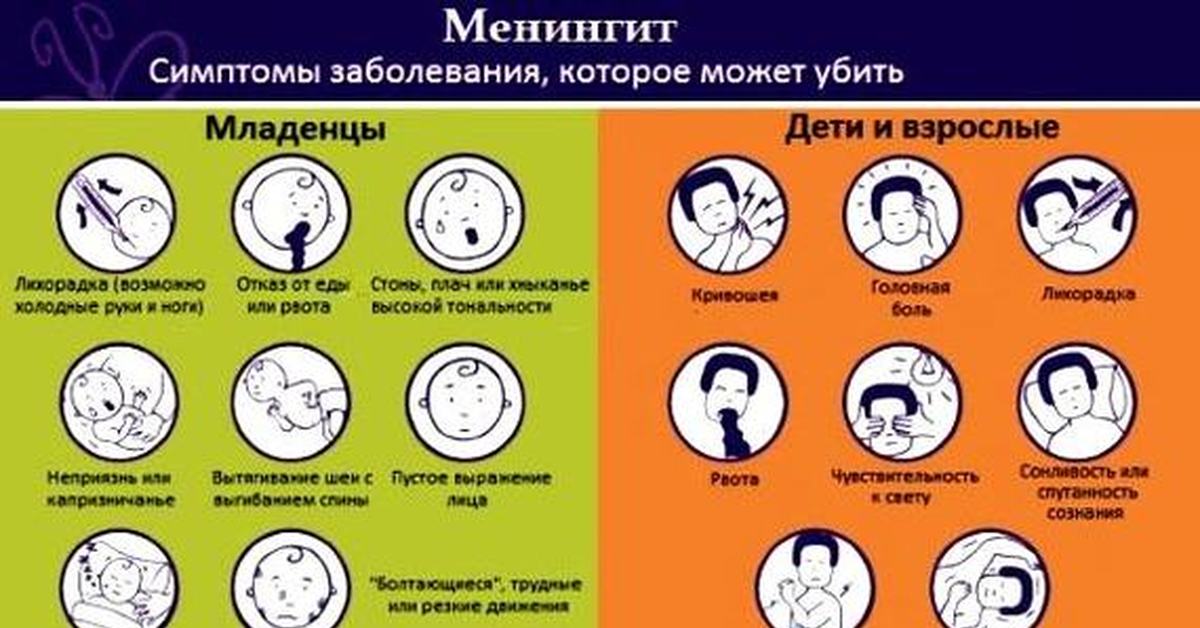 If you’re a college student, your doctor likely will ask questions about any similar signs or symptoms in your roommates and dorm mates. Your doctor will also want to know your vaccination history.
If you’re a college student, your doctor likely will ask questions about any similar signs or symptoms in your roommates and dorm mates. Your doctor will also want to know your vaccination history.
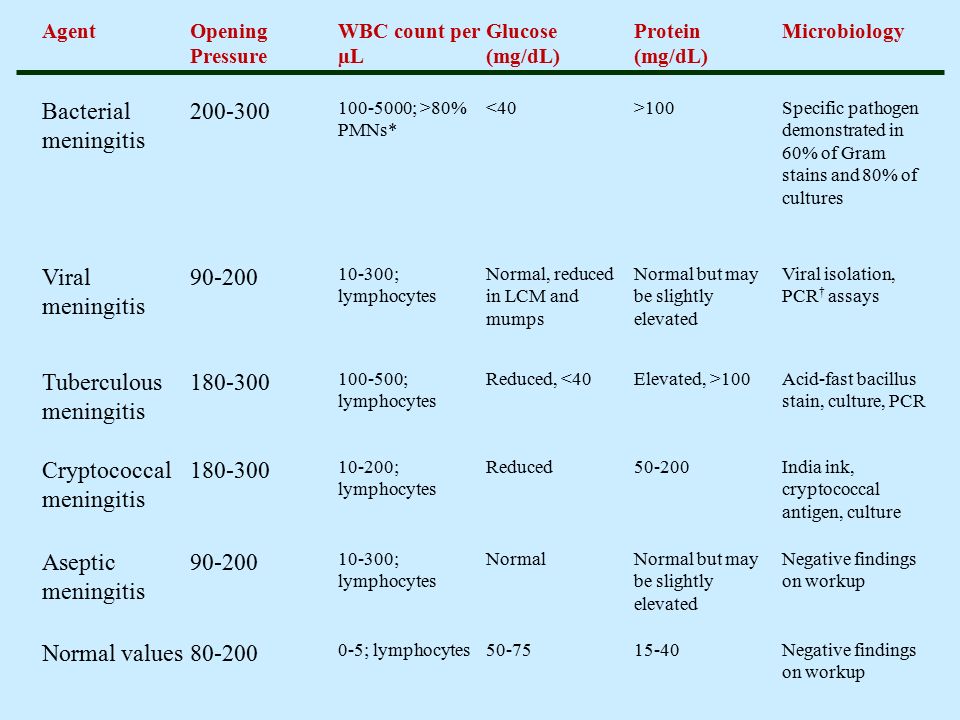 The composition of this fluid changes with meningitis and, according to the characteristic changes, the doctor determines the cause of the disease.
The composition of this fluid changes with meningitis and, according to the characteristic changes, the doctor determines the cause of the disease.